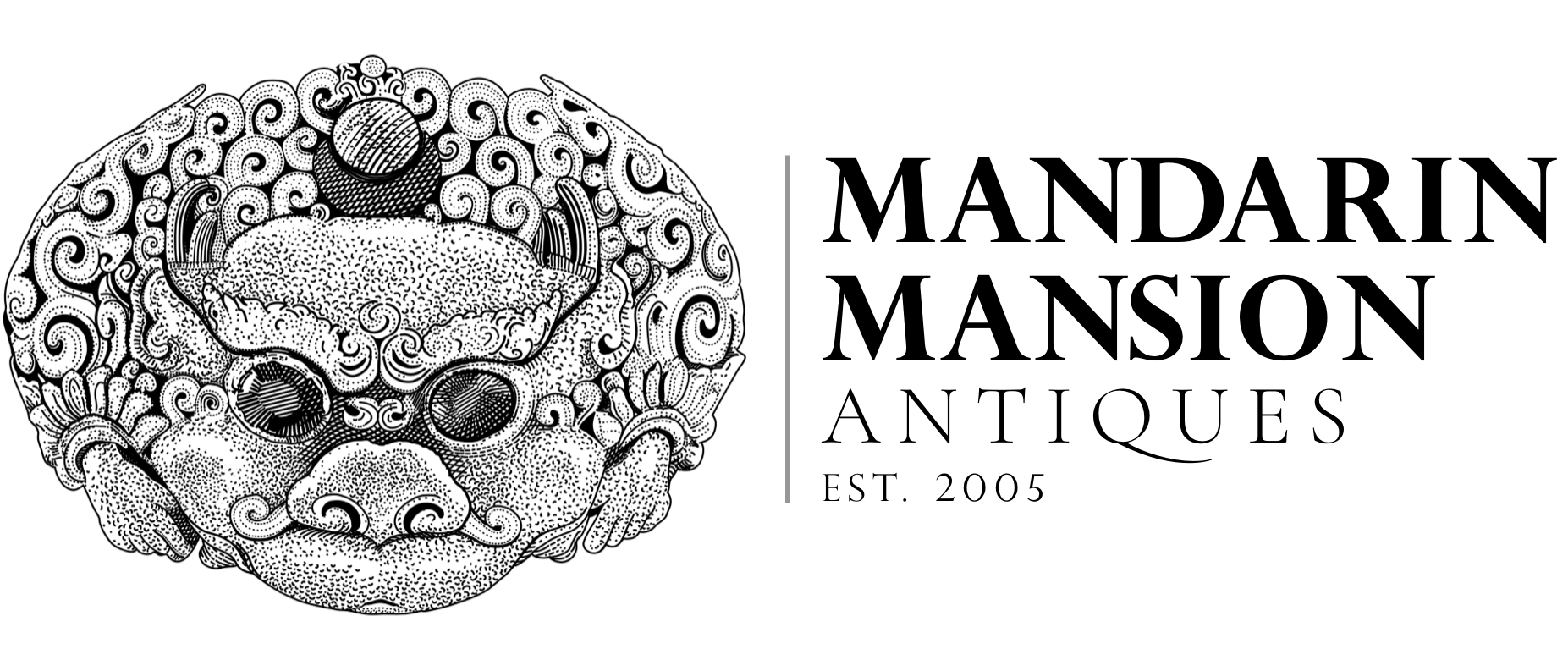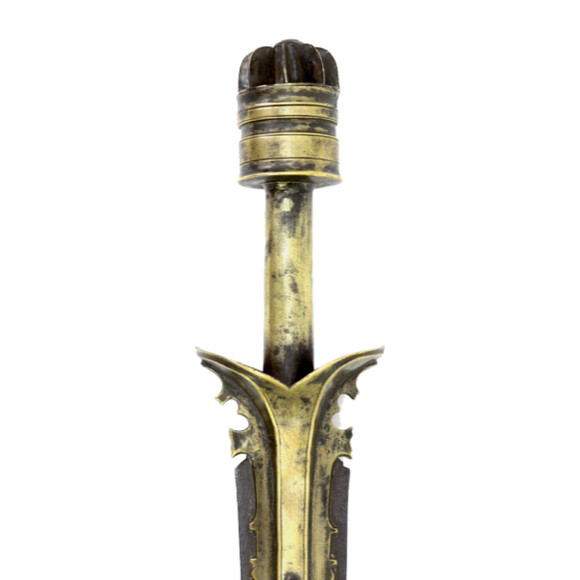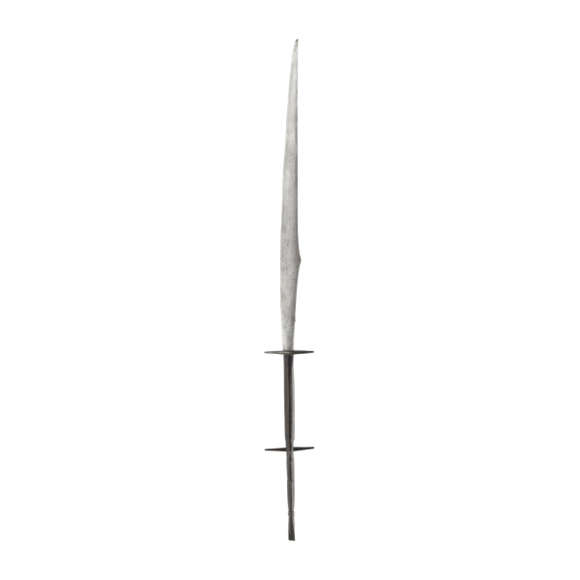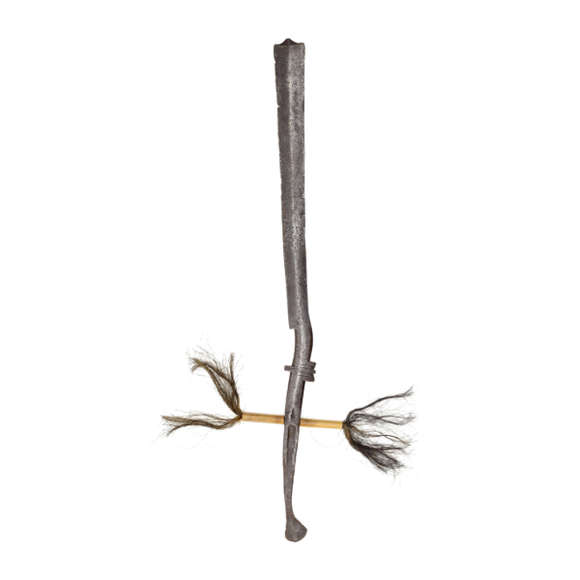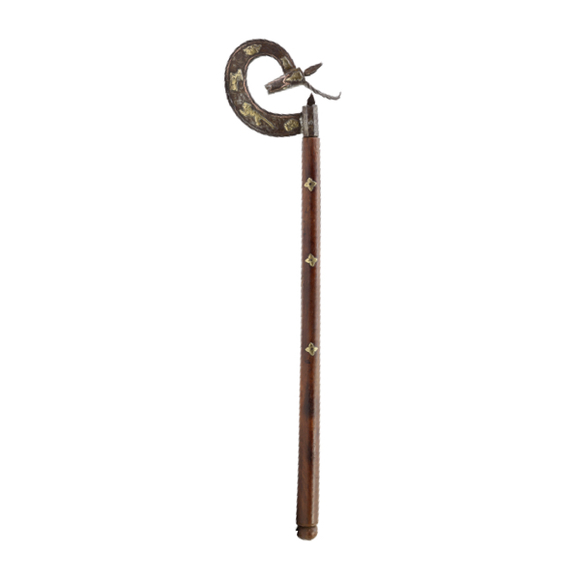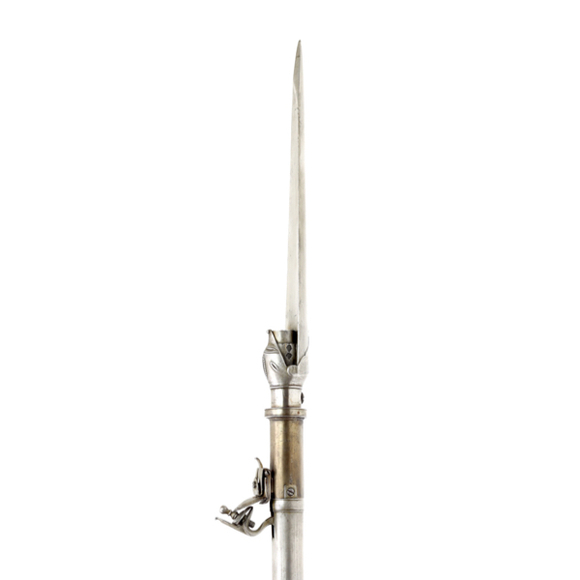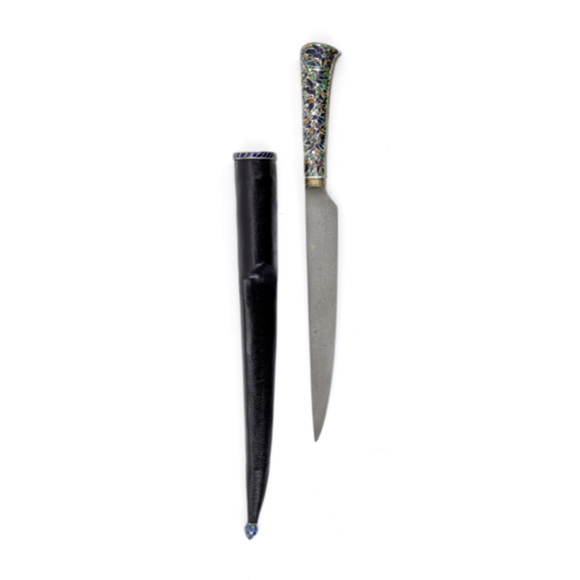An early fighting piece with strong reinforcing langet and broad, cobra shaped tip.

95 cm / 37.4 inch
74.8 cm / 29.4 inch
forte 6 mm
middle 6 mm
near tip 1 mm
forte 37 mm
middle 36.5 mm
near tip 47 mm
1111 grams
13.5 cm from guard
North India
Wootz steel, iron, gold, silver wire
Scabbard: wood, velvet, iron, gold, brass, silver wire
18th or 19th century
European antique market
Introduction
The khanda represents one of the oldest forms of Indian swords, it's present form is first seen on temple reliefs in Orissa dating back as early as the 2nd century A.D. Its name derives off the Sanskrit khaḍga meaning "breaker, divider, cutter, destroyer". Always strongly associated with Orissa, the sword did become popular all over India, from the Rajputs and Sikhs in the north to the Marathas of the Deccan and the Nairs in the south. In some of these cultures it was an element of worship, symbolizing wisdom cutting through ignorance. As such it also features widely in religious art, not only in India but through the Himalayas, China, even into Japan.
On a practical level the khanda is a straight cutting sword, (partially) double edged, with a widening blade and an obtuse tip. Most fighting examples have considerable weight in their tip for powerful cuts. The blades often have reinforcements in the form of a long langet at the base of the blade or reinforcing strips on either side of the blade. In the 1600's the characteristic Hindu basket hilt was developed for increased hand protection.
Notes to introduction
See Rawson, P.S.: The Indian Sword, Herbert Jenkings, London, 1968. Pages 6-8. and Stone: A Glossary of the Construction, Decoration and Use of Arms and armor, 1934. Reprint by Dover, 1999, p. 352.
This example
Presented is a fine khanda. The blade gradually widens towards the tip, where it terminates in a triangular point, a feature often seen on northern versions of this type of sword. The blade is made of boldly contrasting wootz. In the right light one can also observe a prominent darkening at the main edge side, indicative of a differential heat treatment. (Done by cooling the edge faster than the body of the sword.) The blade is reinforced with metal strips, one longer than the other, richly decorated with gold koftgari work.
The typical Hindu basket hilt is also entirely made of wootz steel, of somewhat lower contrast than the blade. Its borders are finely chiseled with motifs of leaves, in a fashion often seen on katar from Bundi. These leaves represent the Tree of Life. Each leaf is covered with gold. The langets and crossguard are chiseled and decorated with gold. The knuckle guard is chiseled with raised ornaments, also covered with gold, and its surface is ribbed. The pommel plate is also richly pierced, chiseled and gilt. From the pommel emerges a long spike with an onion-shaped finial, again all chiseled and decorated with gold.
The handle retains its original binding in a combination of cord and silver wire. The original wooden scabbard is covered with old faded red velvet. It has an iron chape with golden damascening. The suspension system is brass and of a style that indicates it is probably made by an English craftsman. It has fine engravings, also in a very European style. There is a stopper on the right side to prevent it from sliding through when worn thrust under belt or sash. When sliding the suspension system just a little over the old scabbard, bright red velvet is exposed, indicating they have been together ever since the scabbard was new.
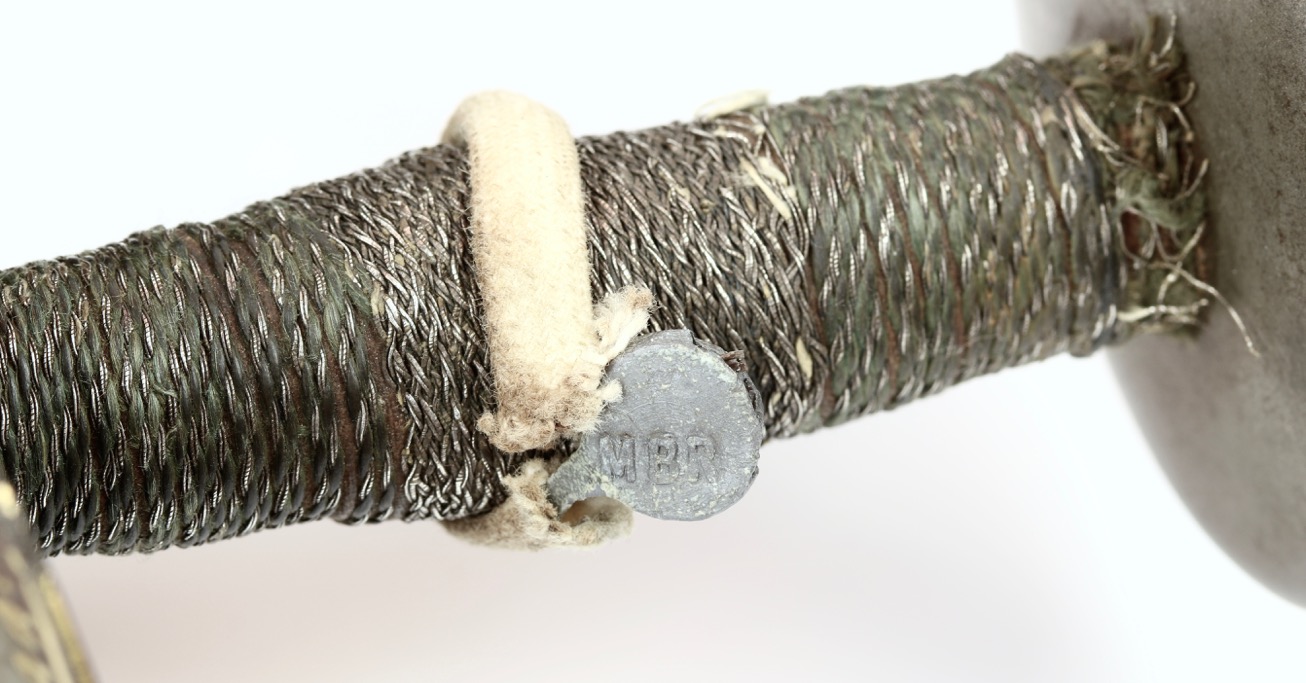
Attached to it is a lead seal with the letters: "MBR".
I have not been able to work out what they stand for.
Conclusion
An excellent khanda with both a wootz blade and handle. The hilt is chiseled and damascened with gold. The impressive blade is of high-contrast wootz steel that is supported by strips of steel, all decorated in gold. Complete with original scabbard.
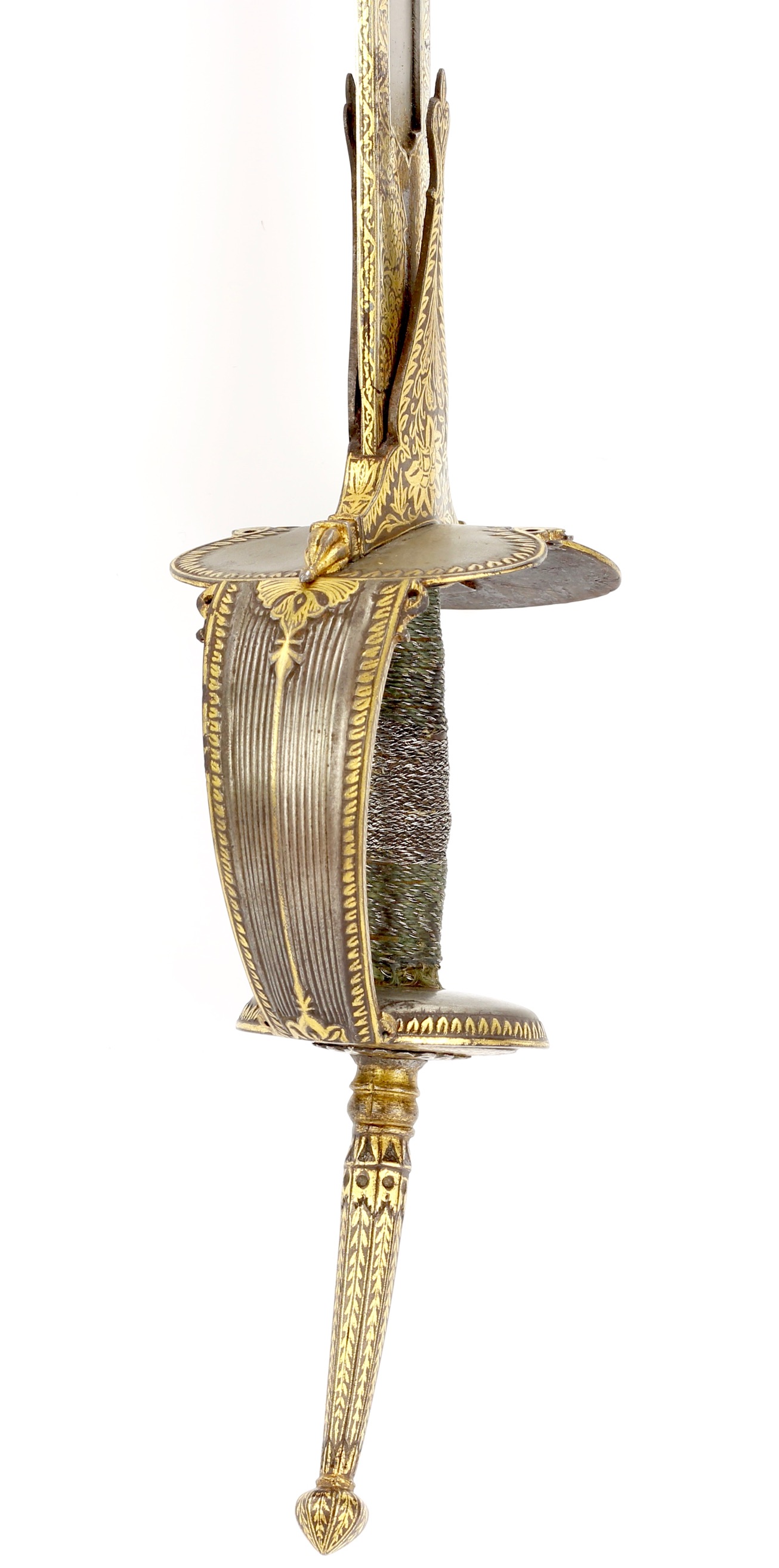

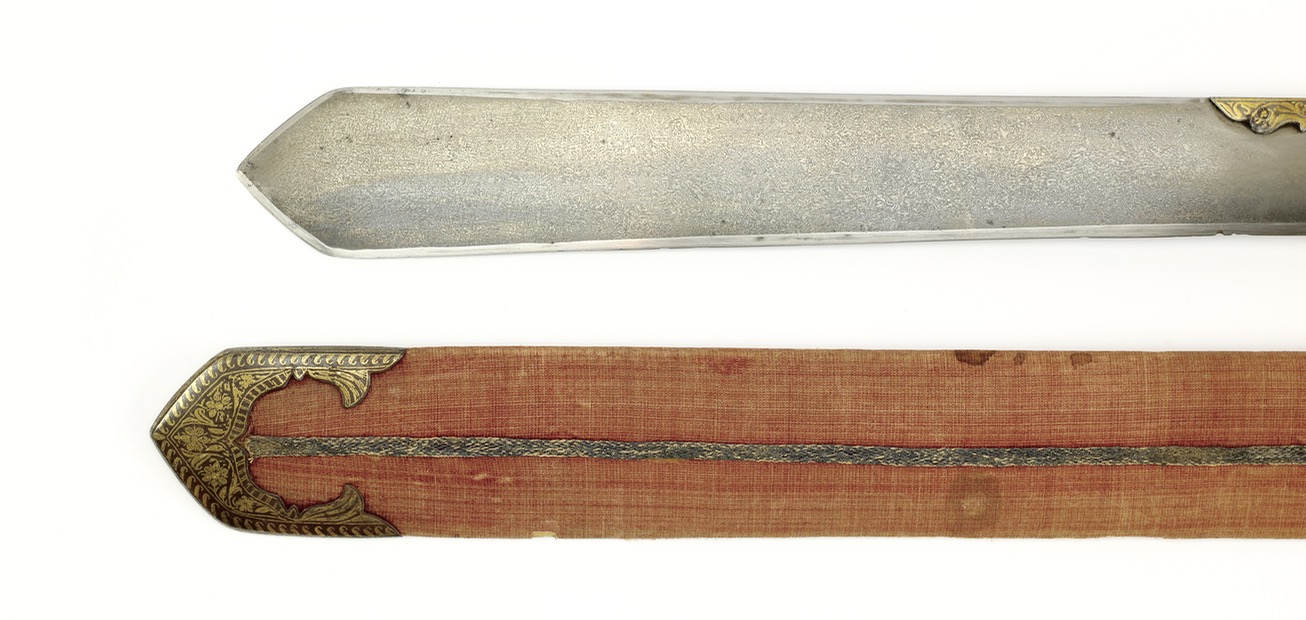
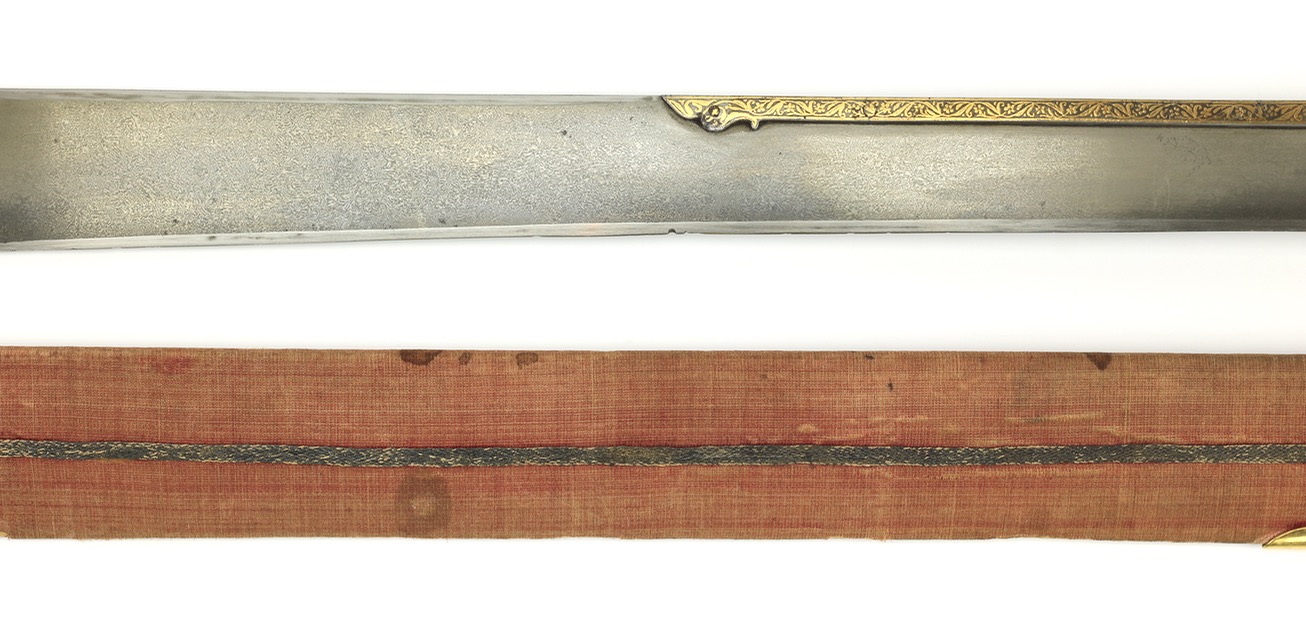
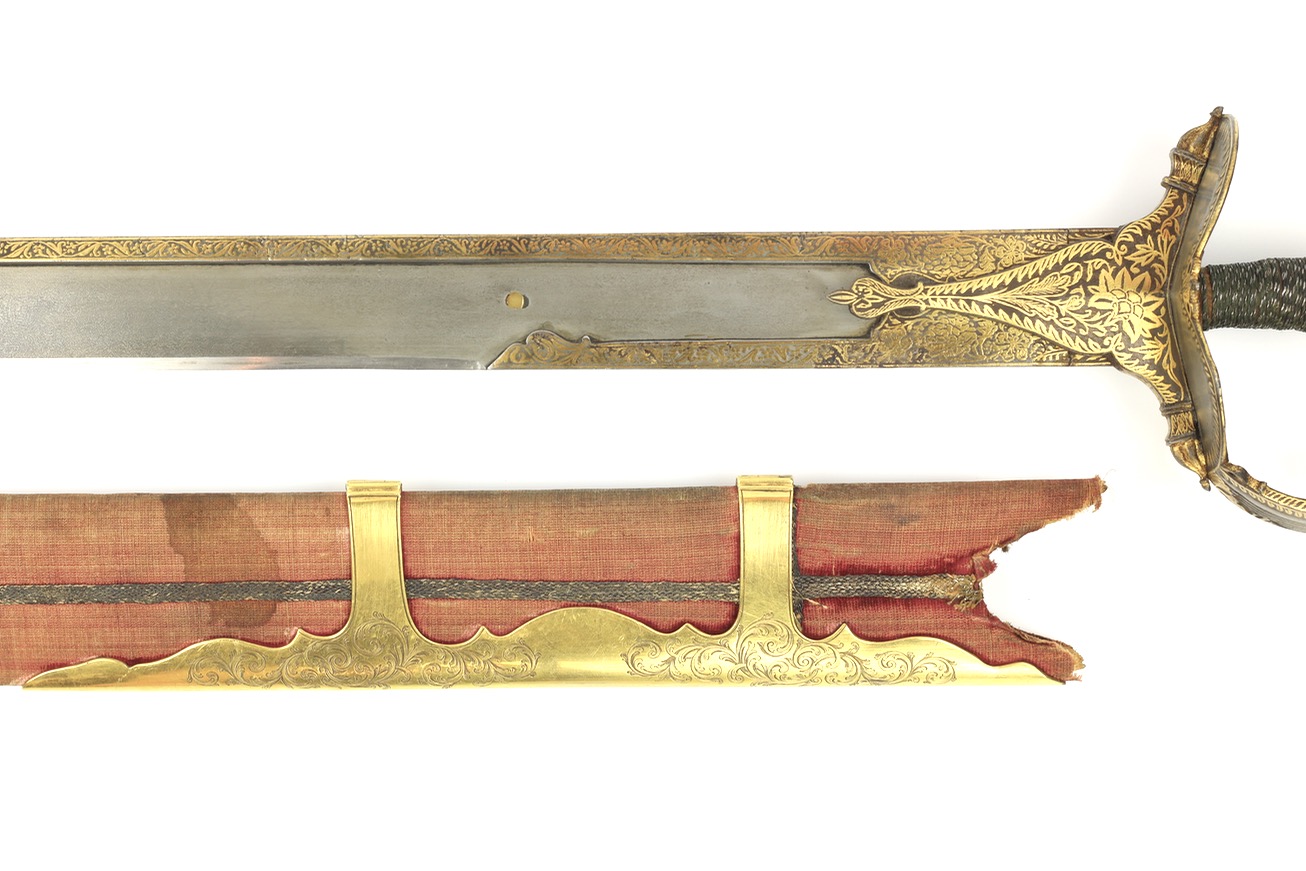
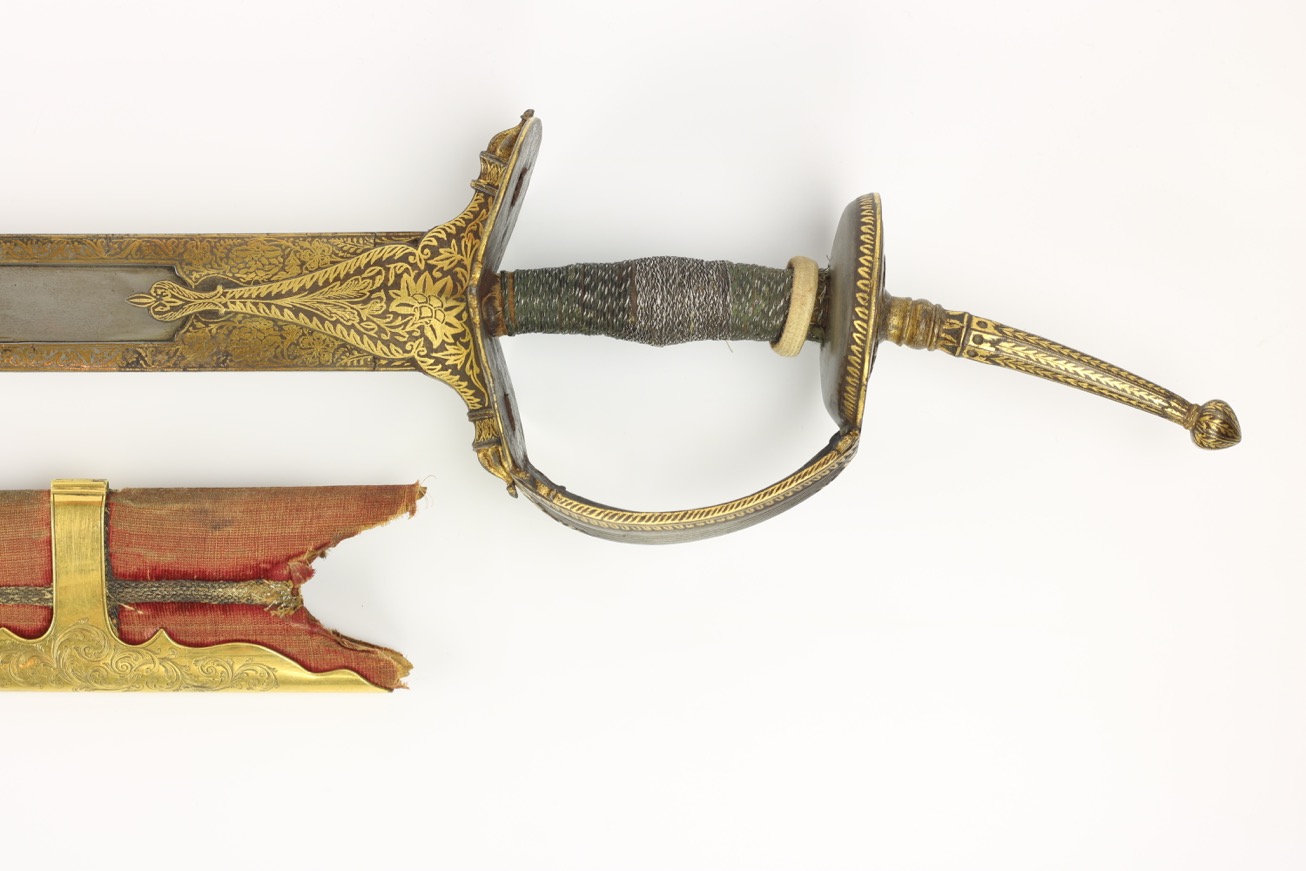
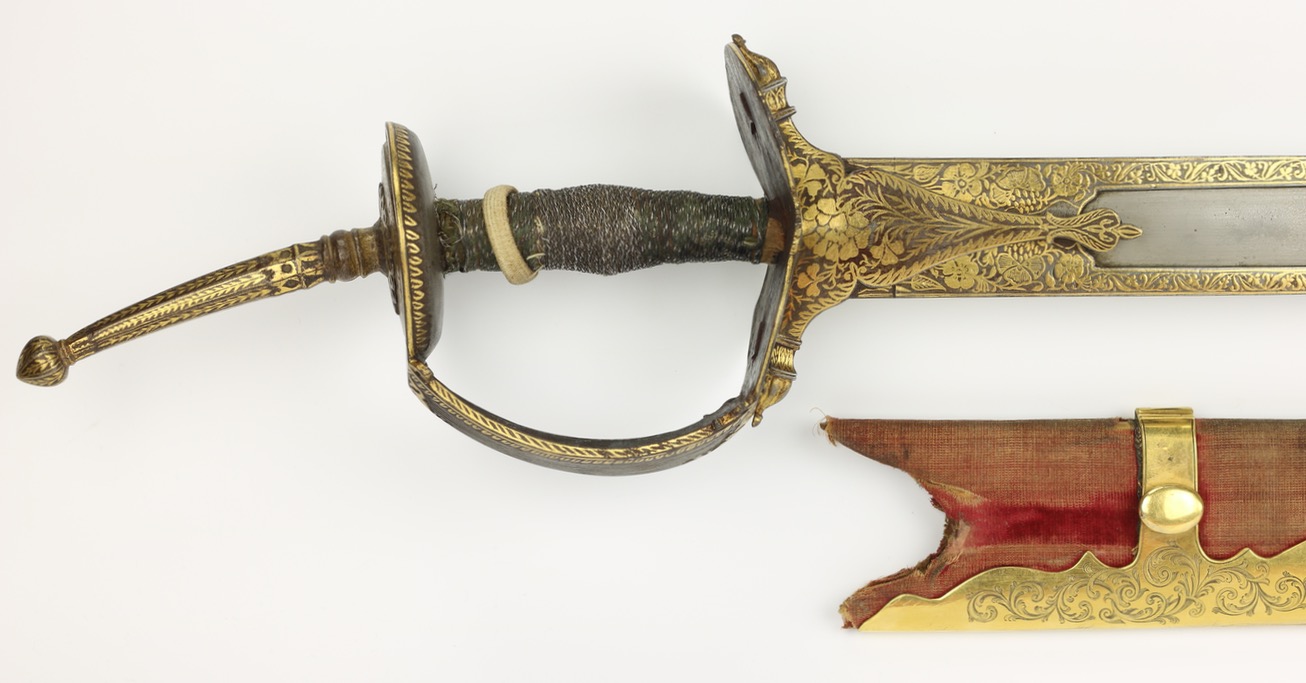
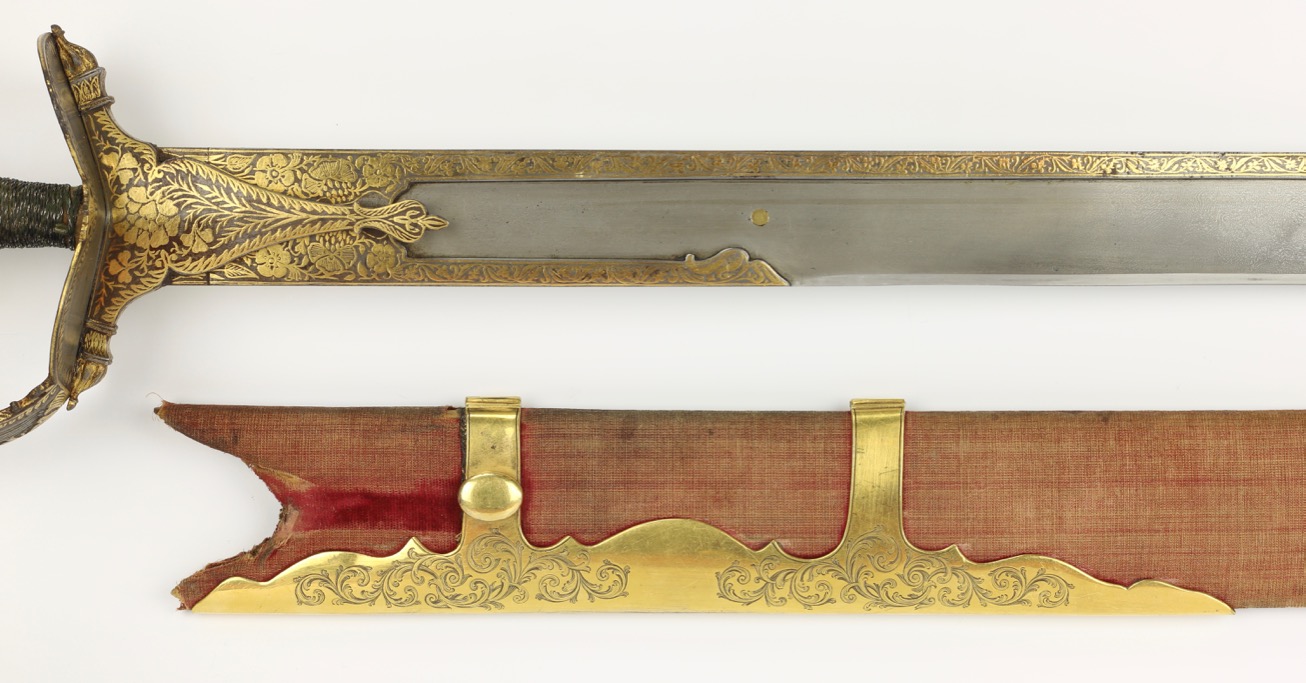
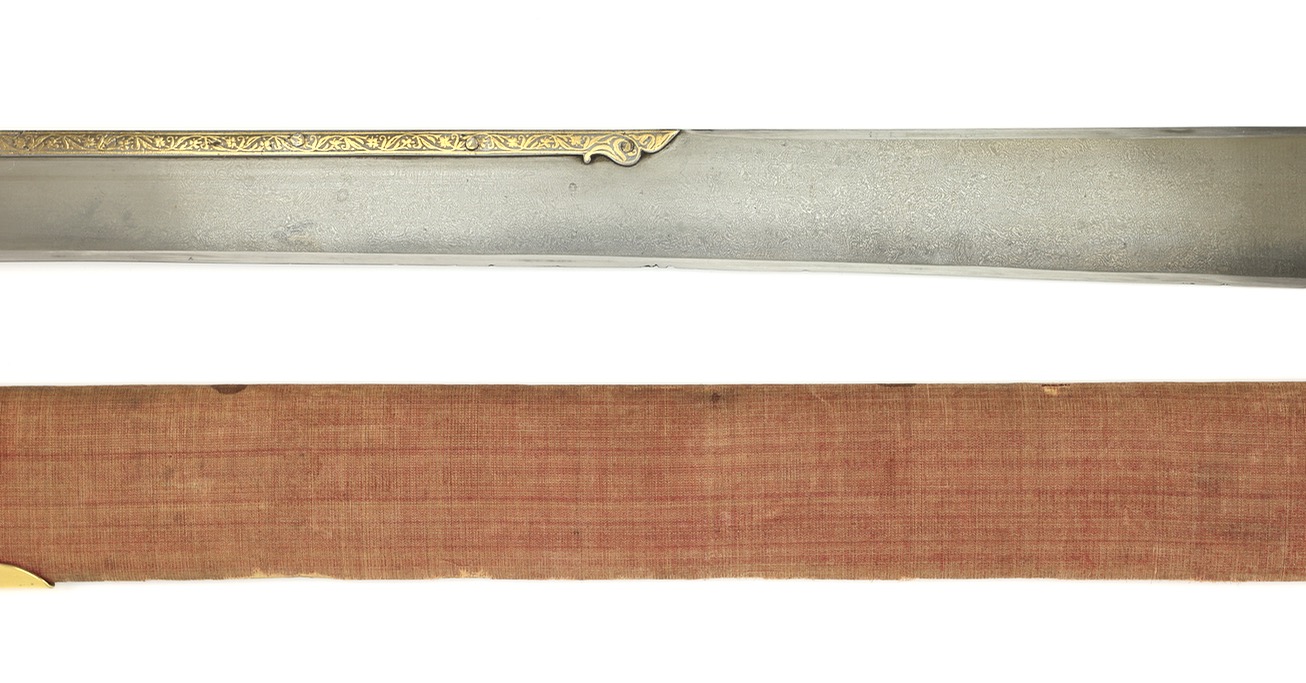
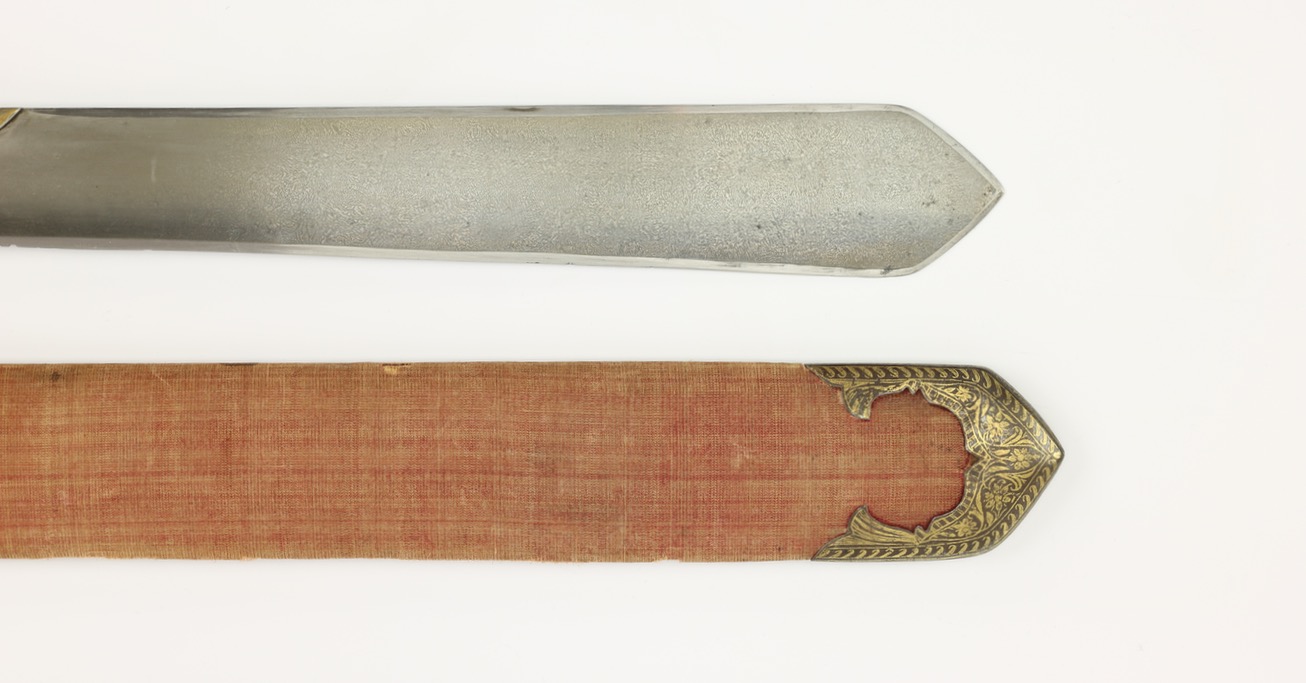

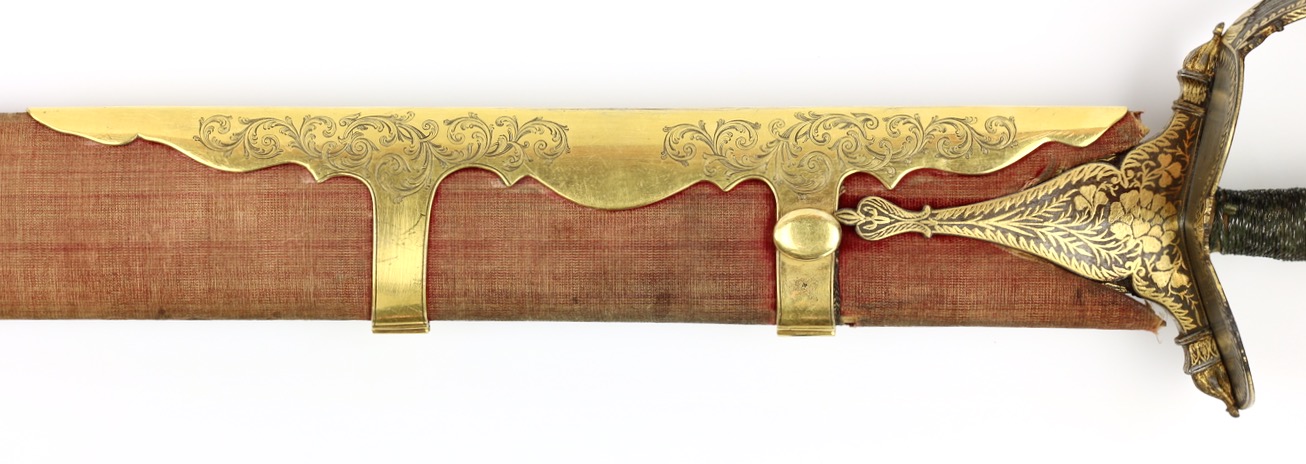
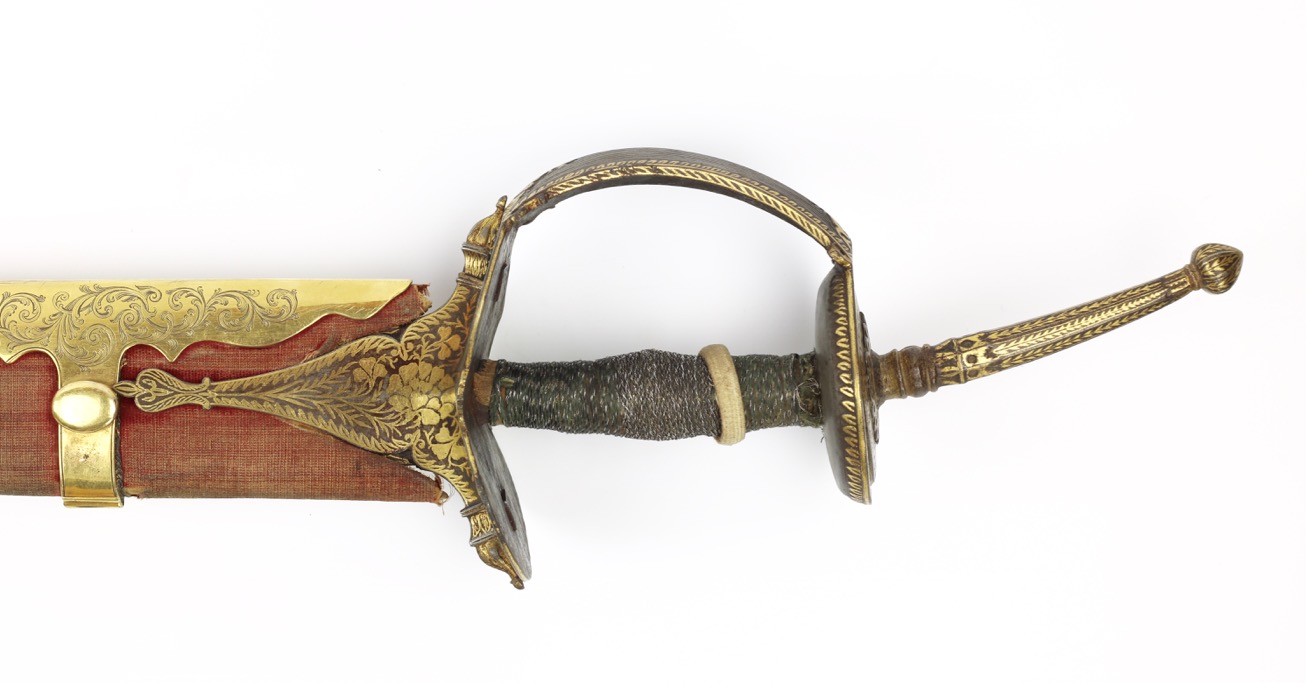


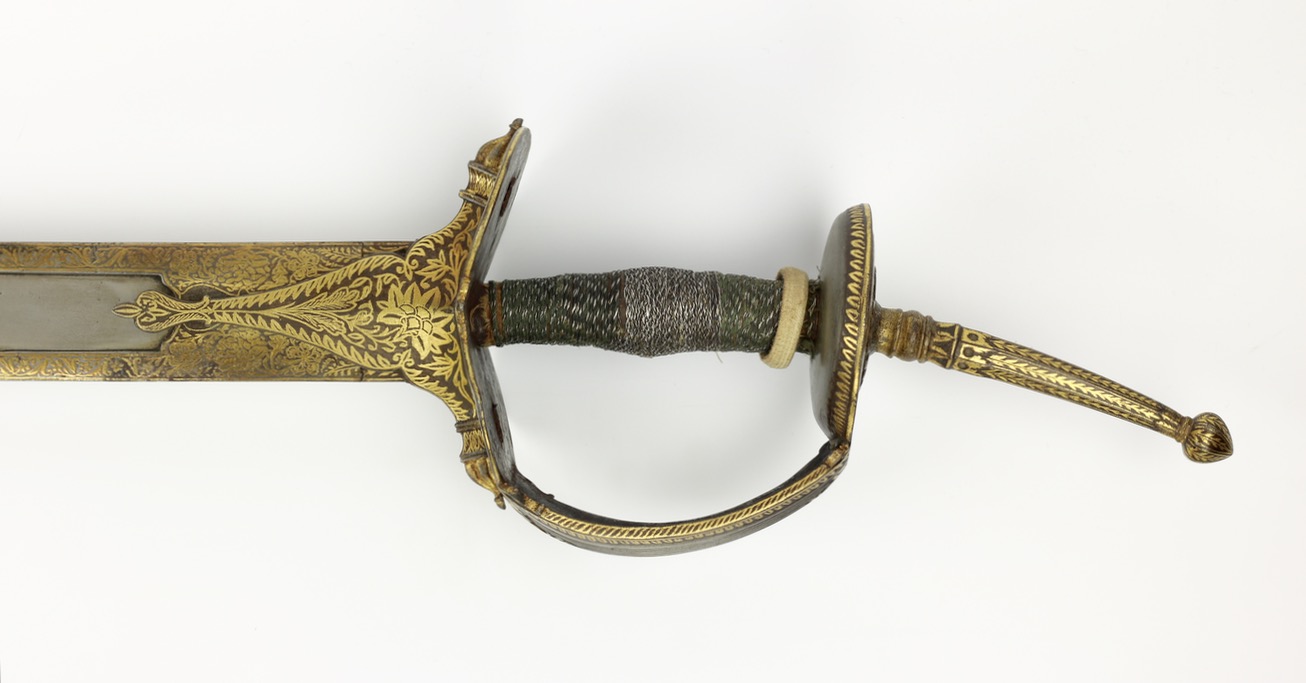
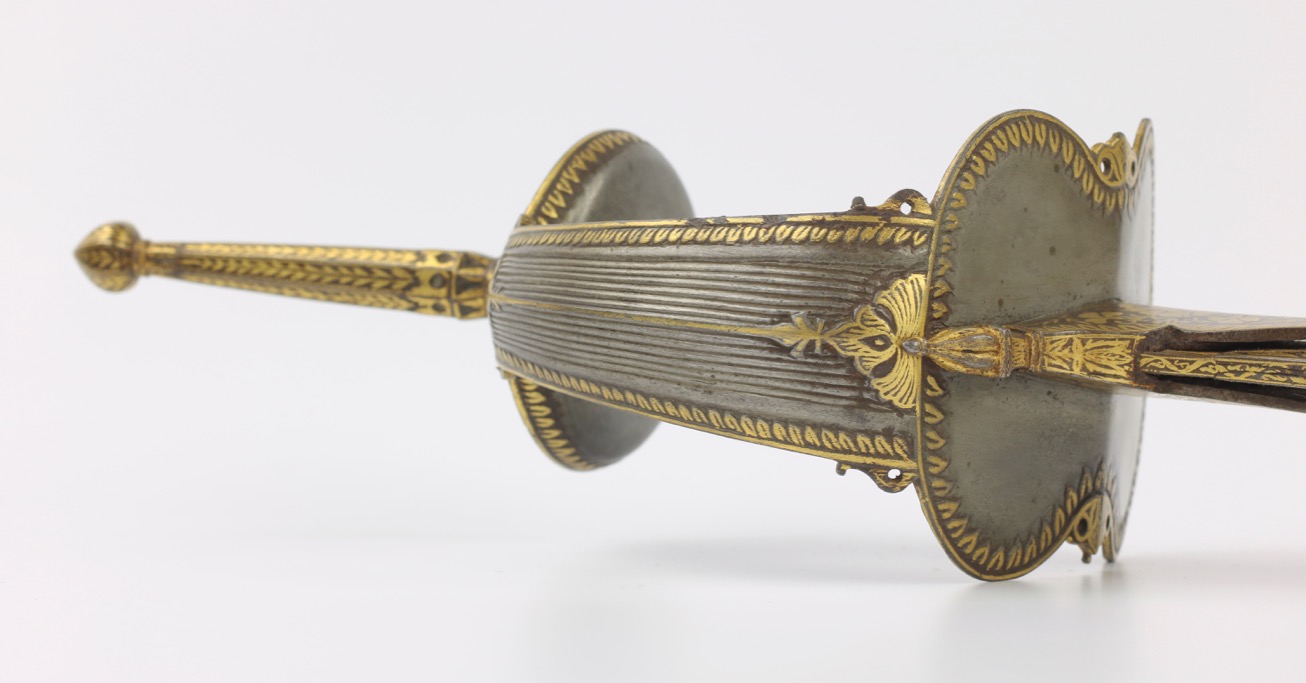
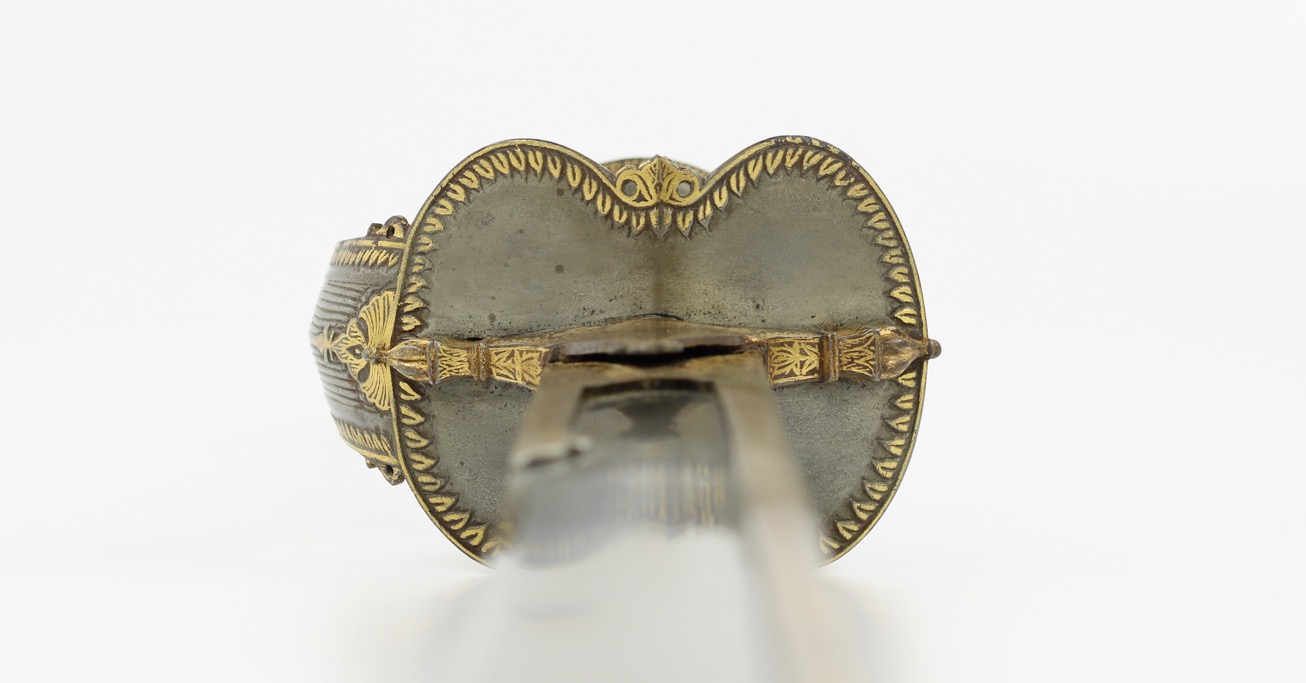
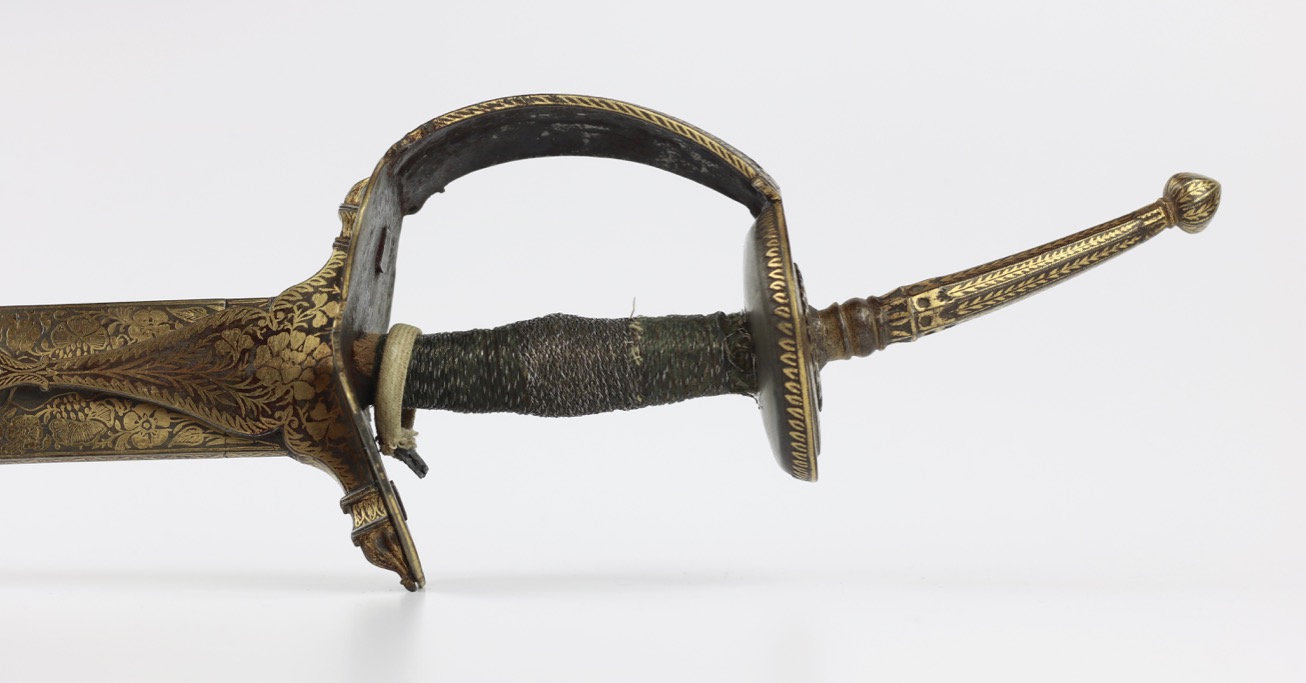
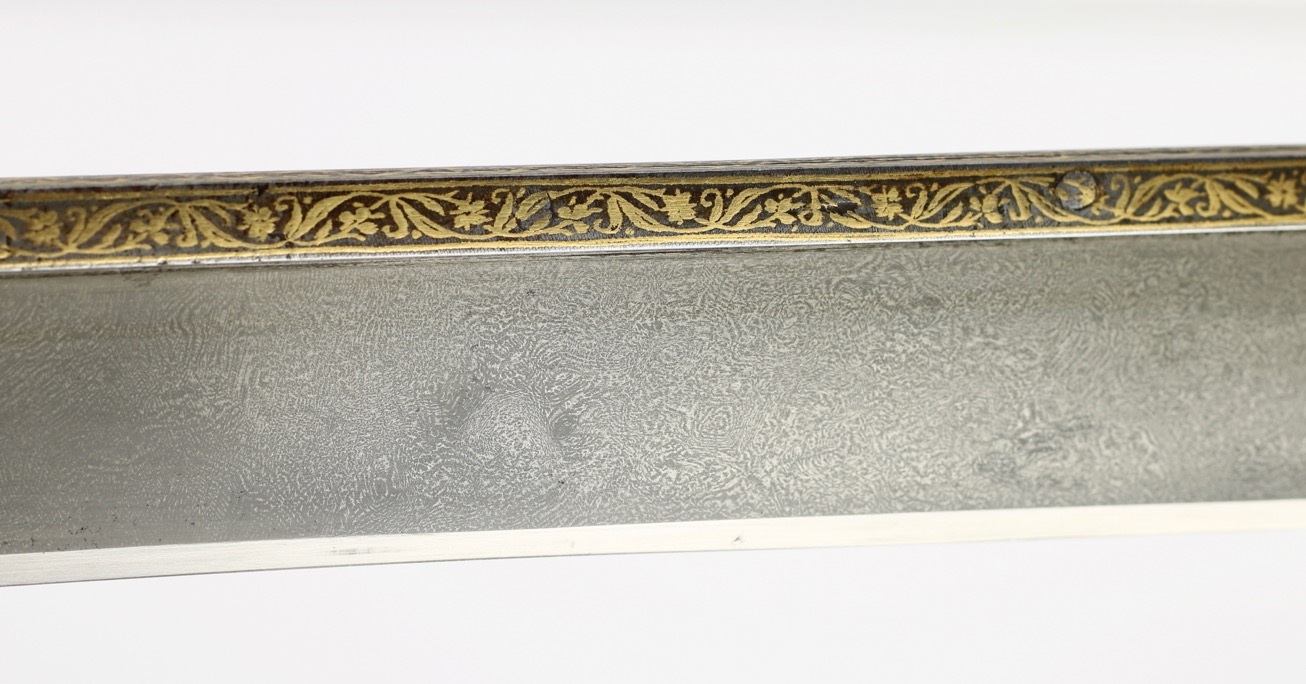
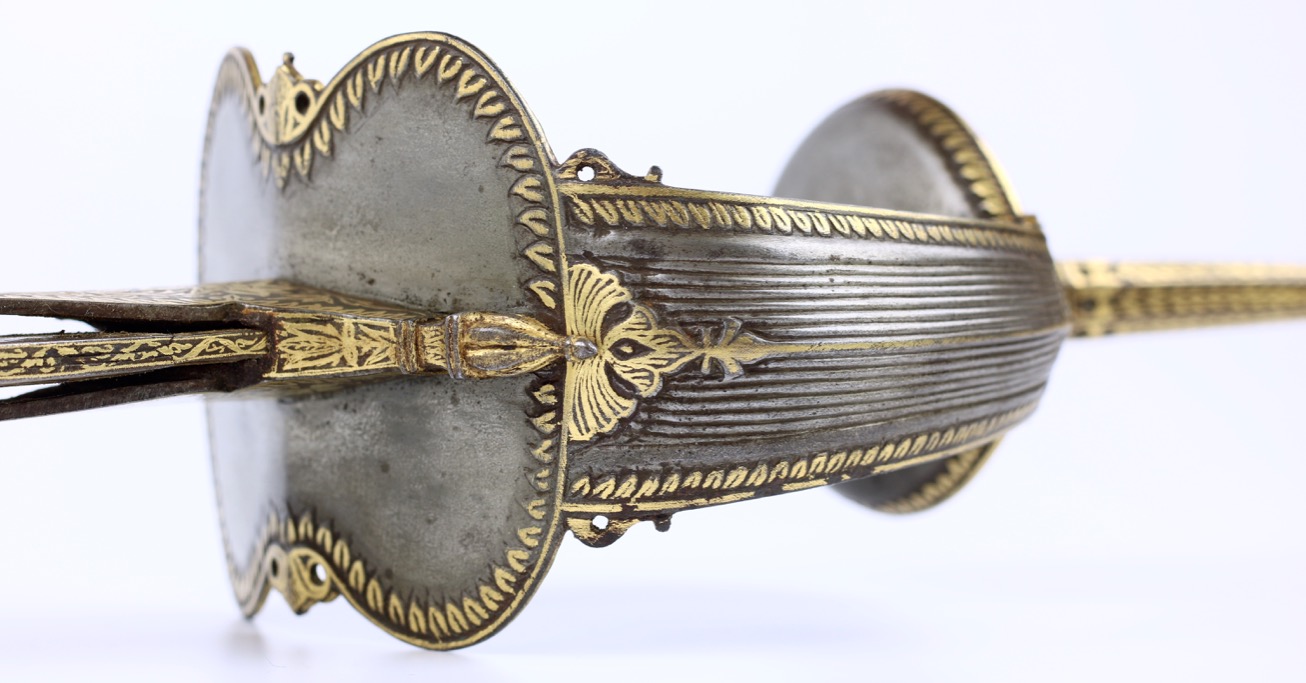
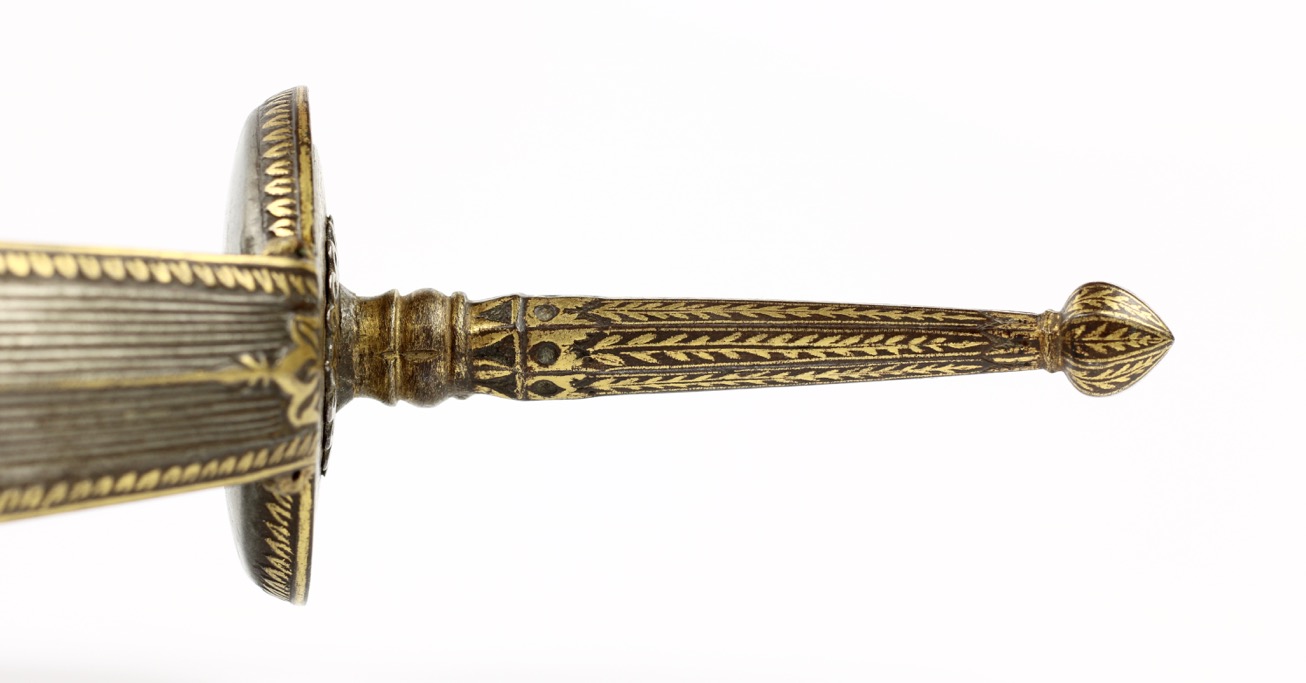
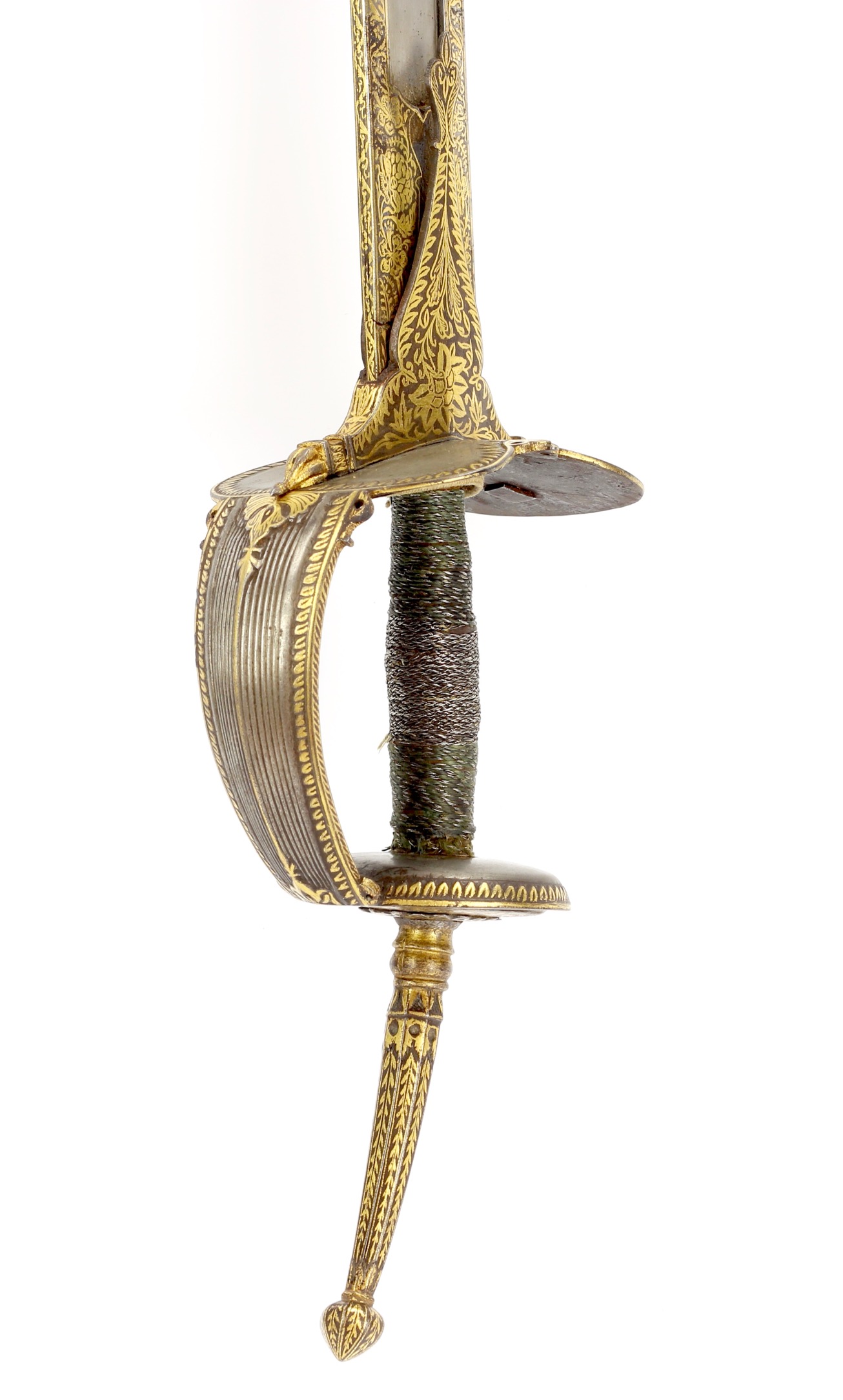
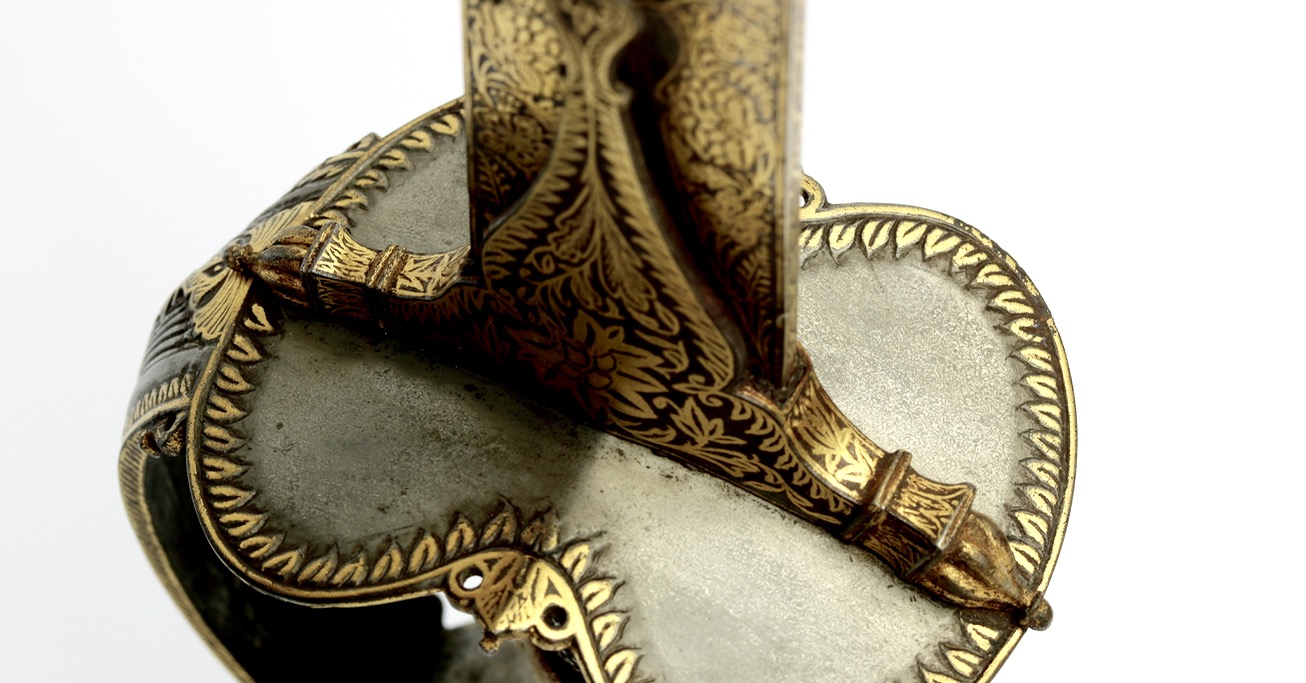
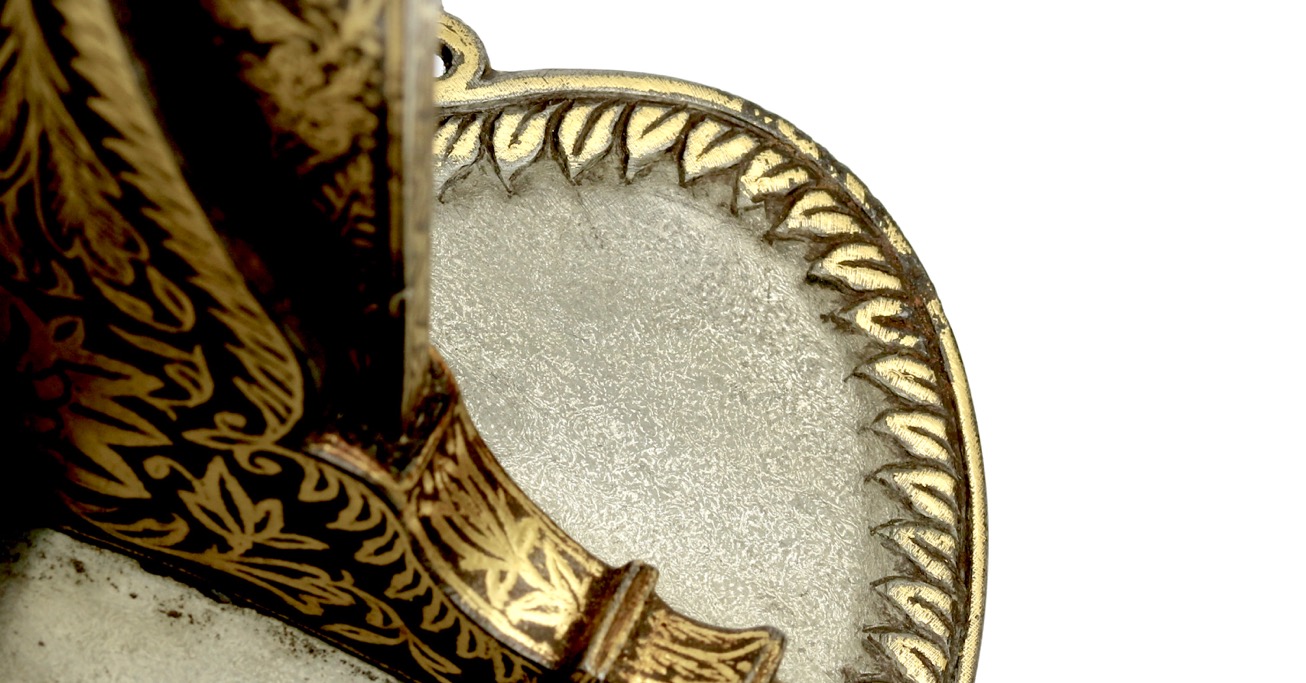
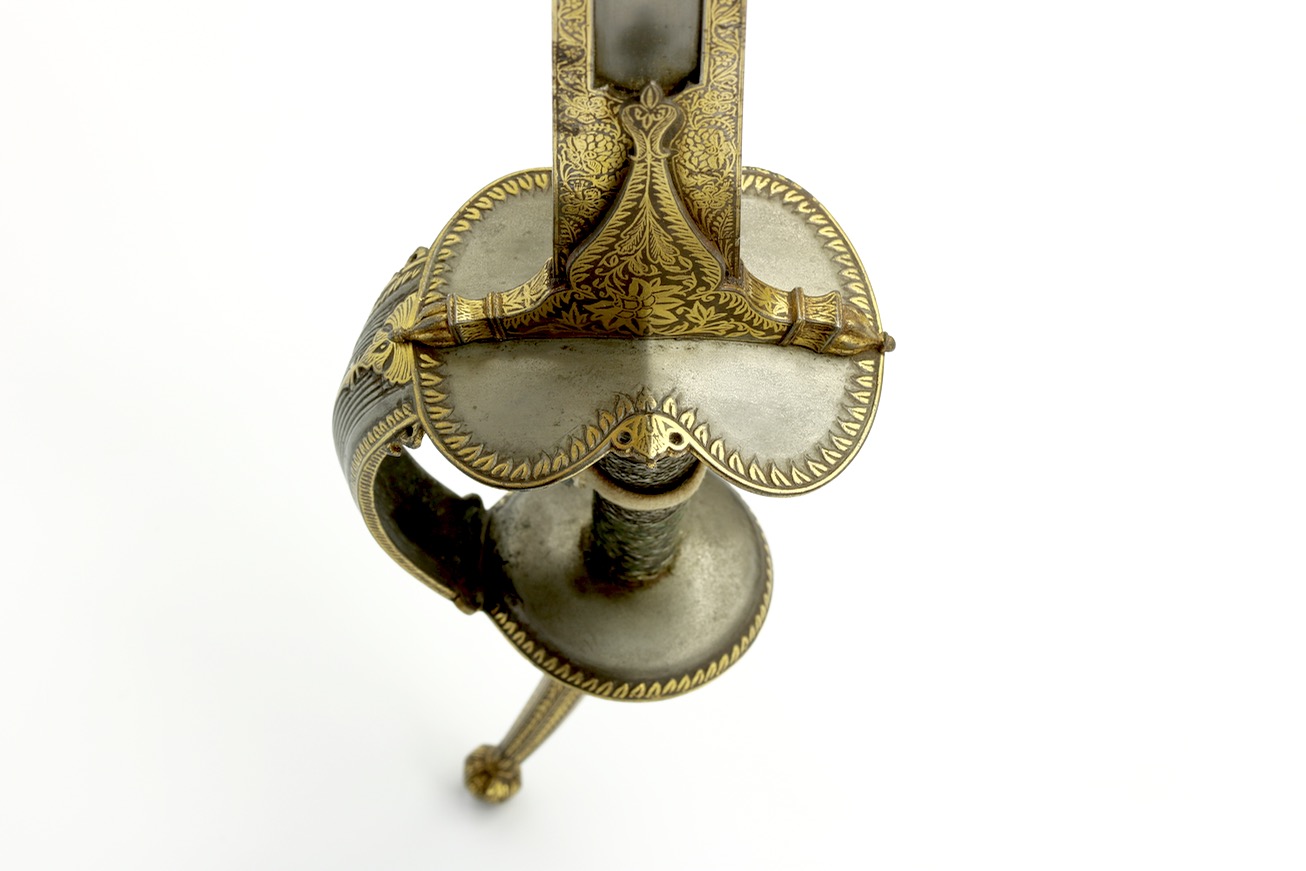
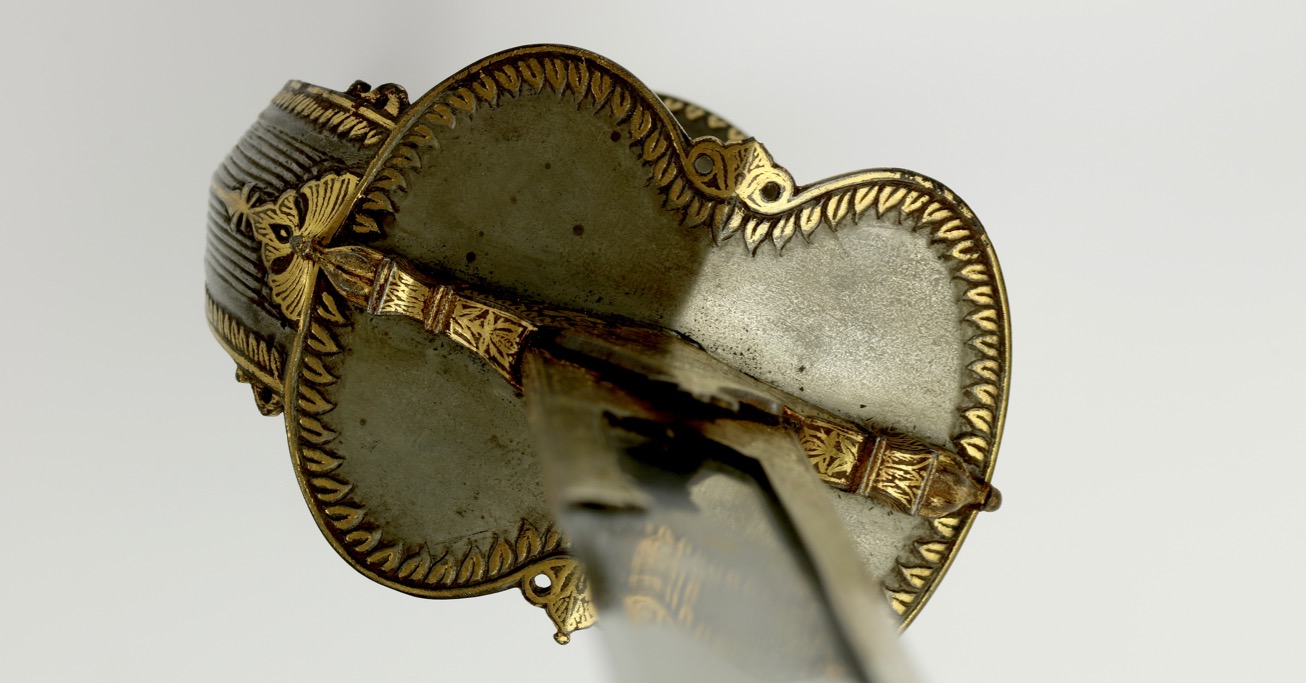
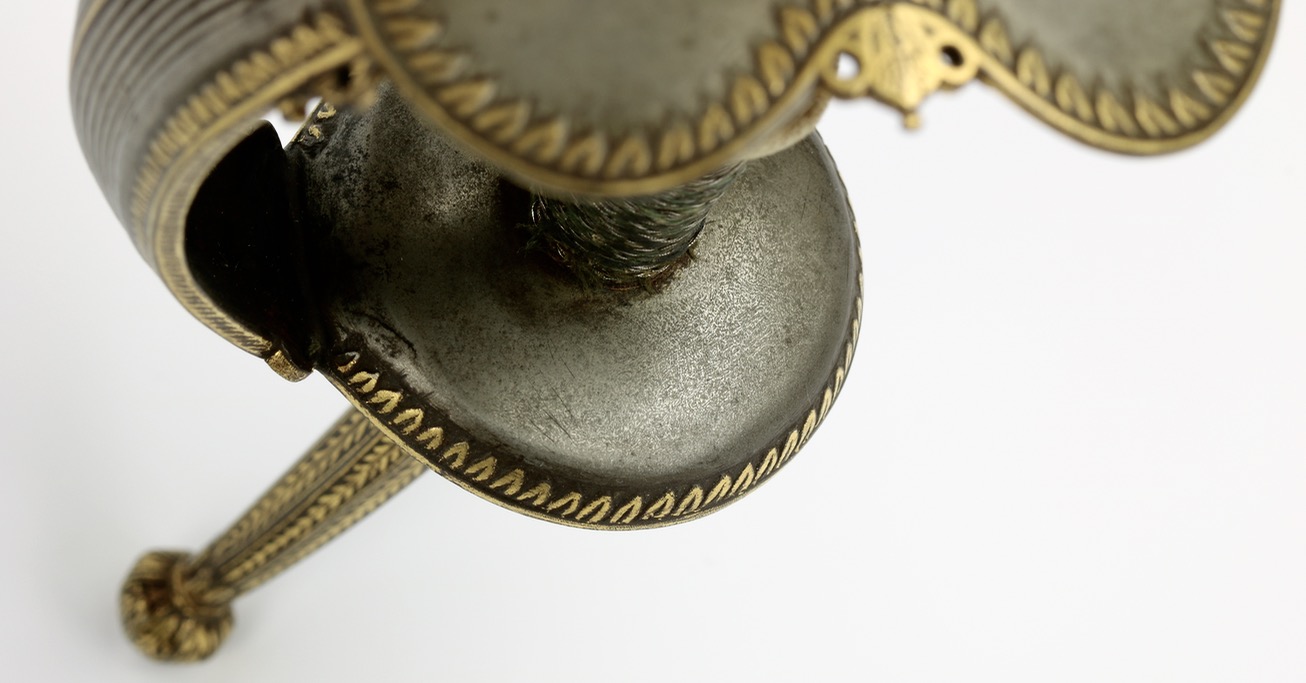
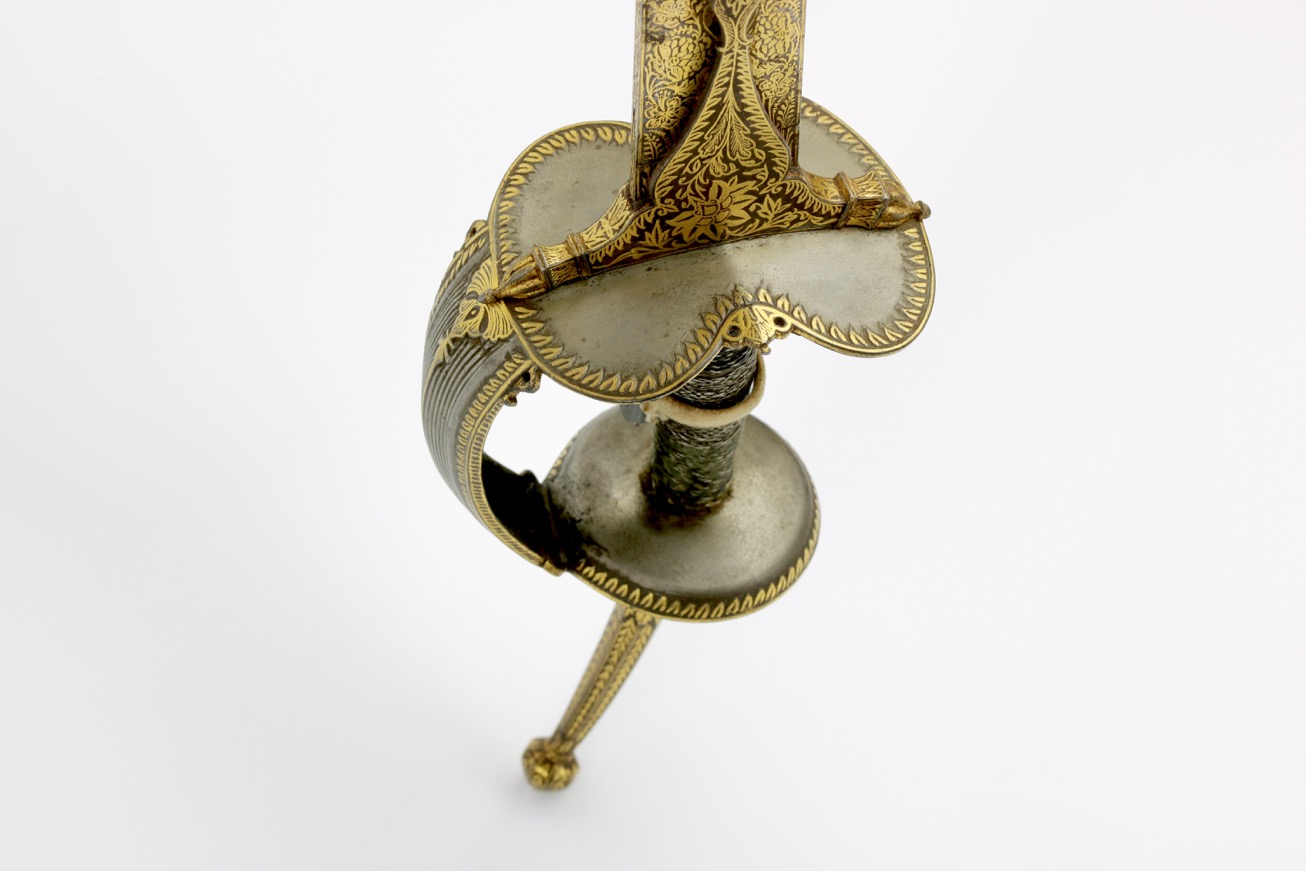
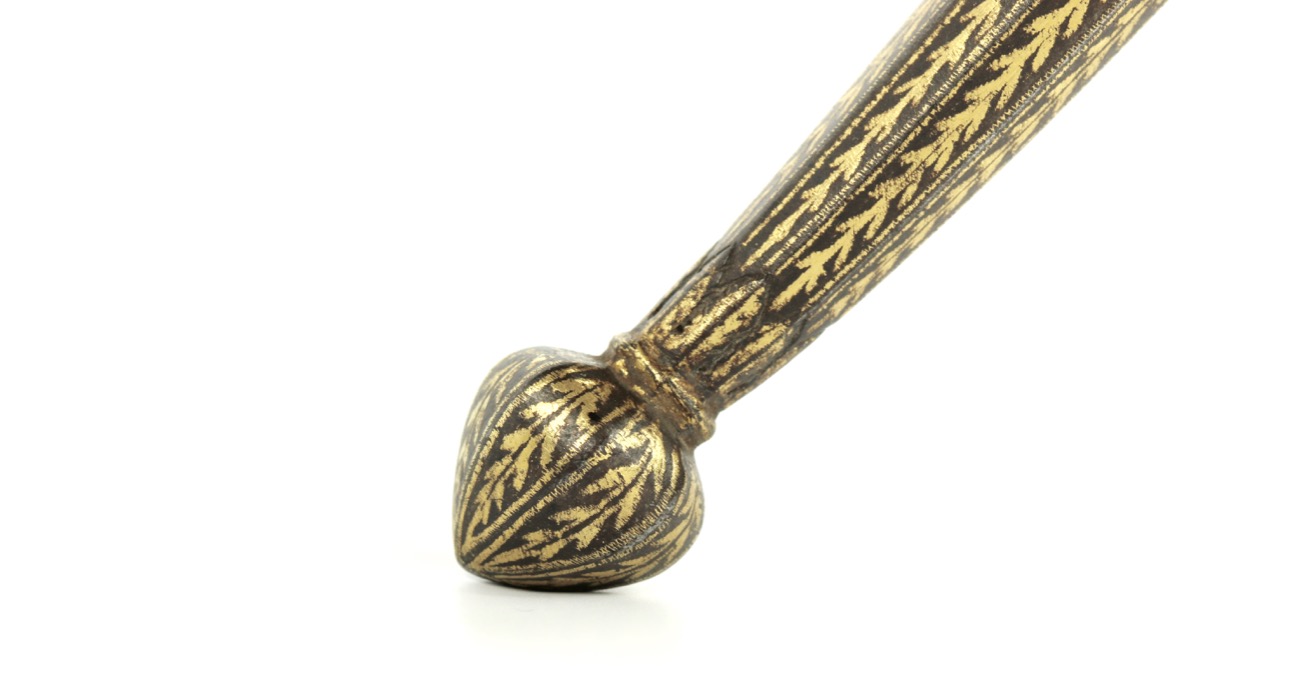
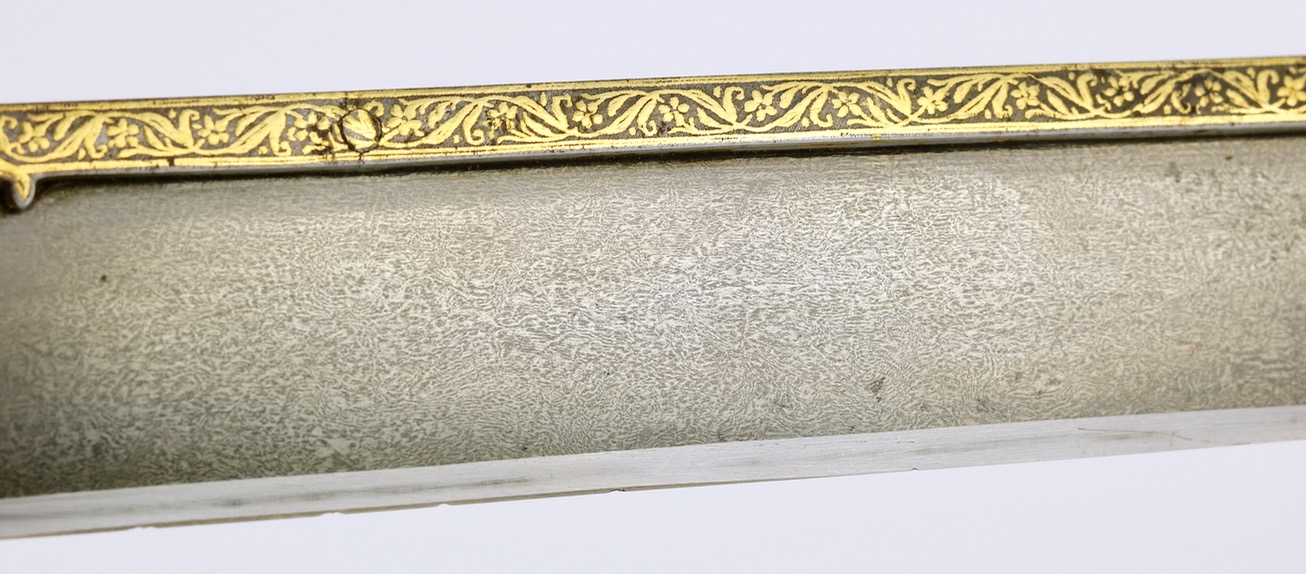
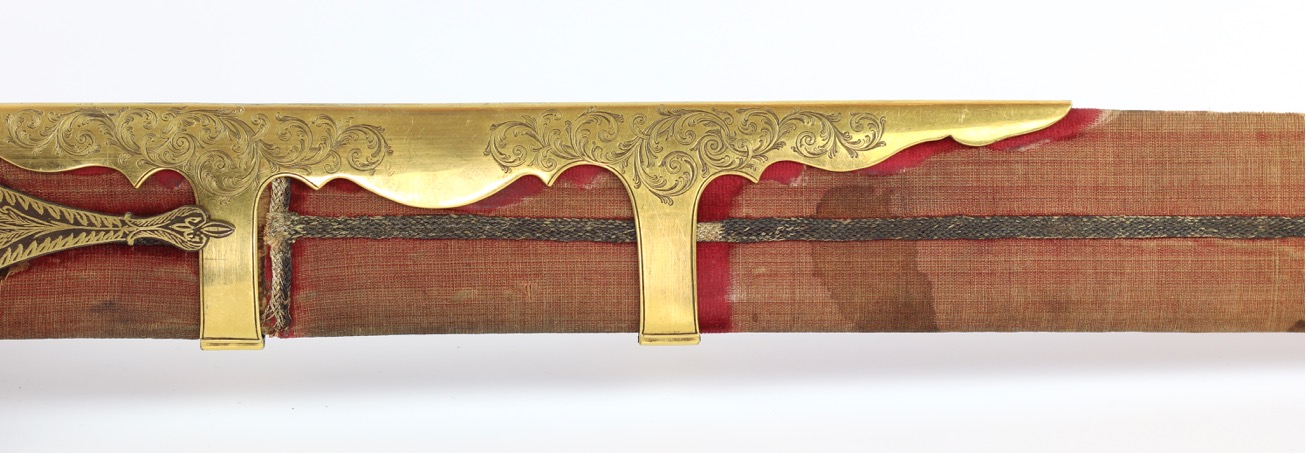
Scabbard suspension system slid aside to show the decoloration on the scabbard's velvet. They have been together for a long time.
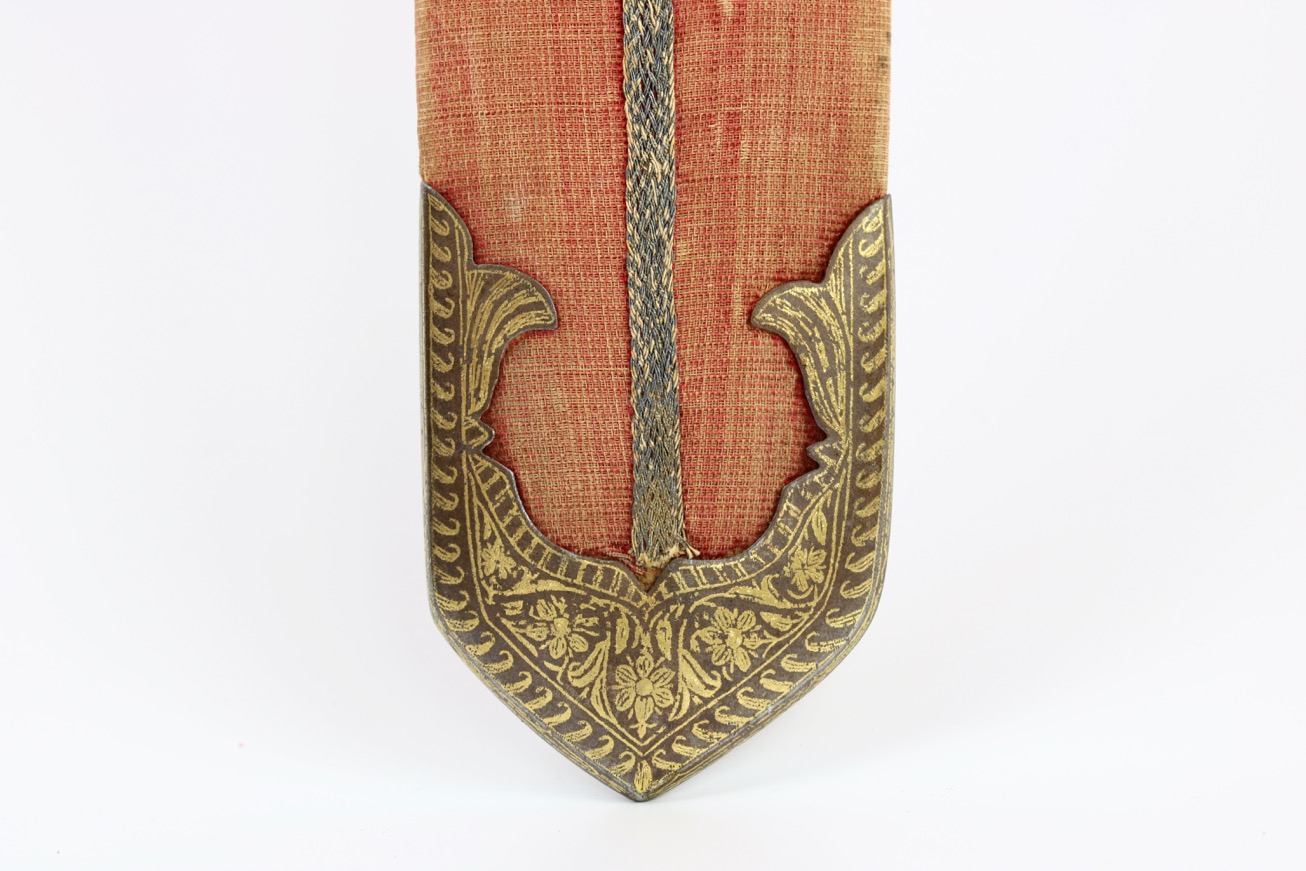
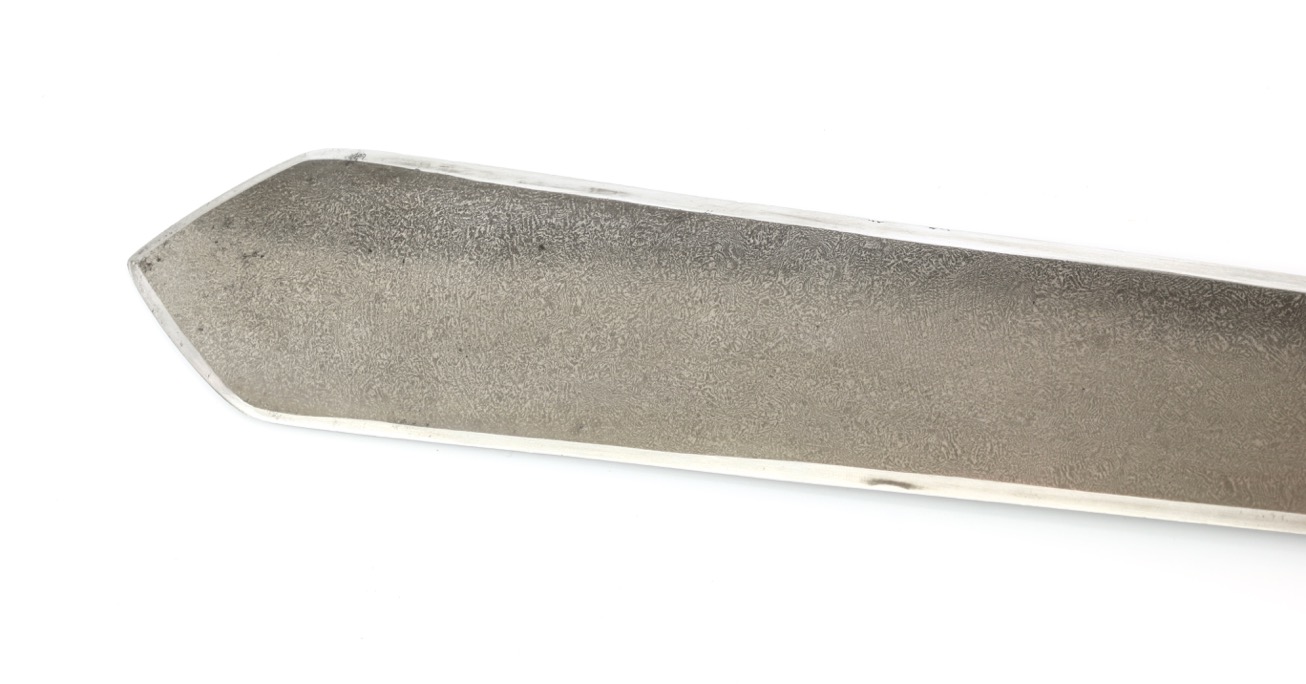
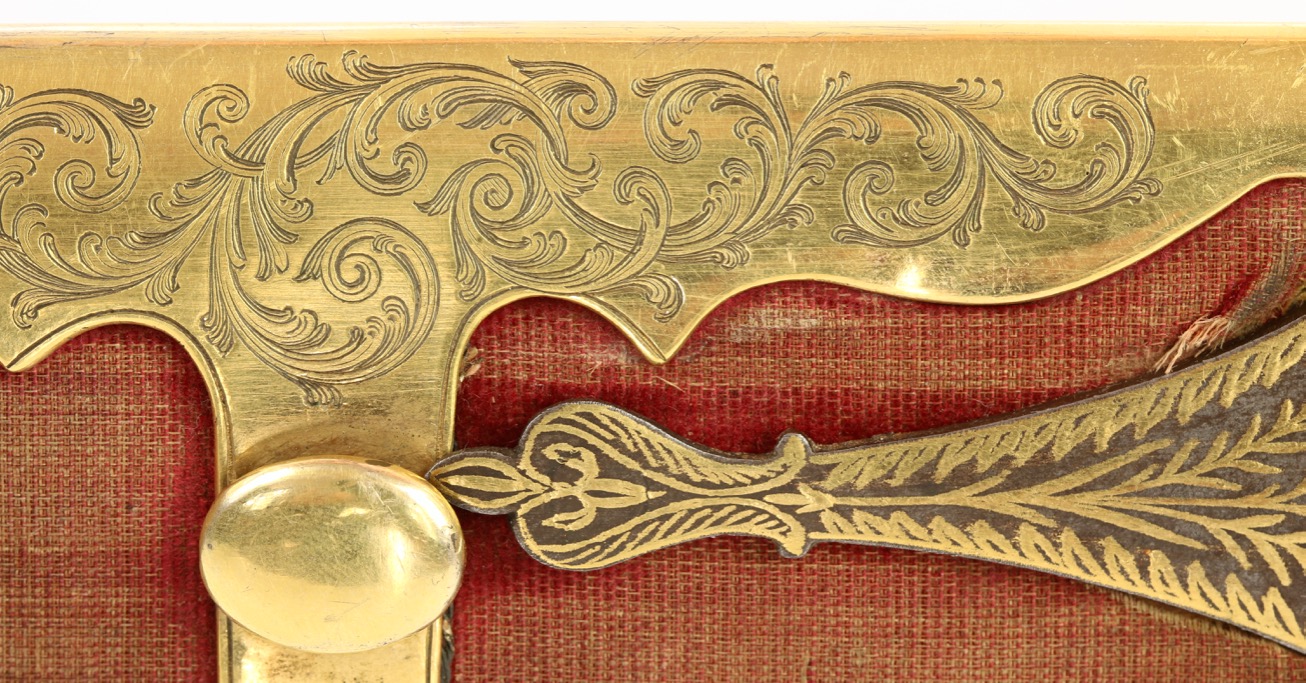
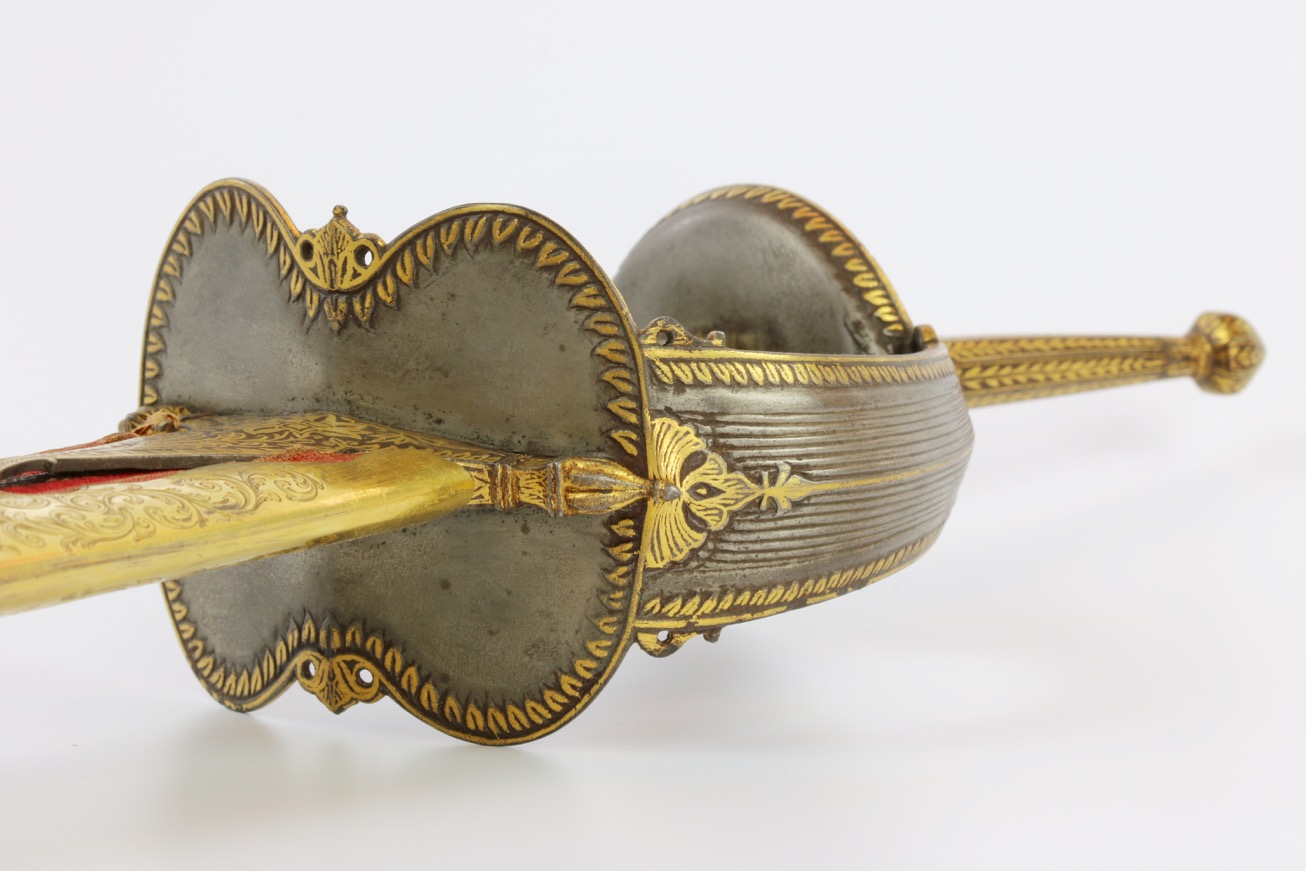
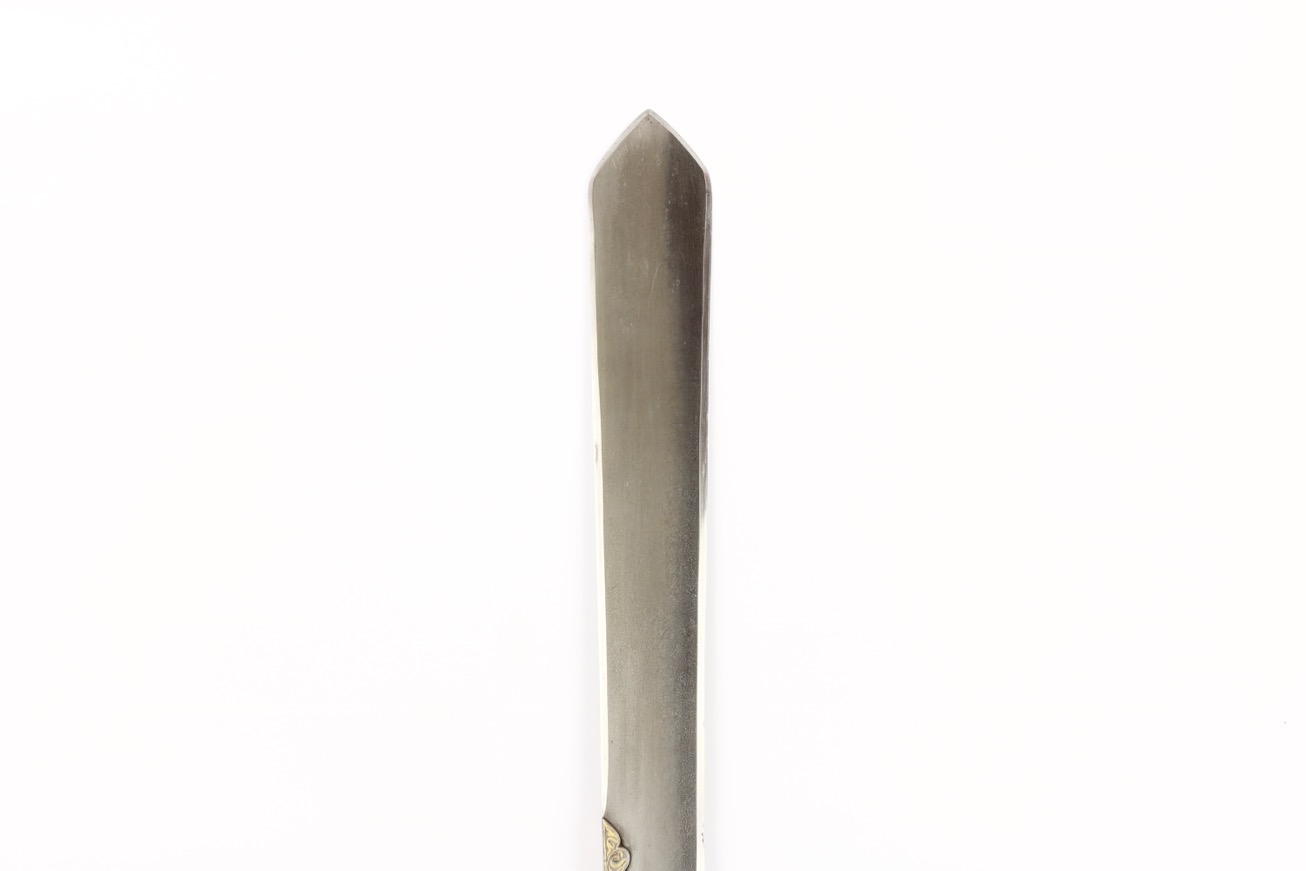
The dramatic differential heat treatment is clearly visible in the right light.
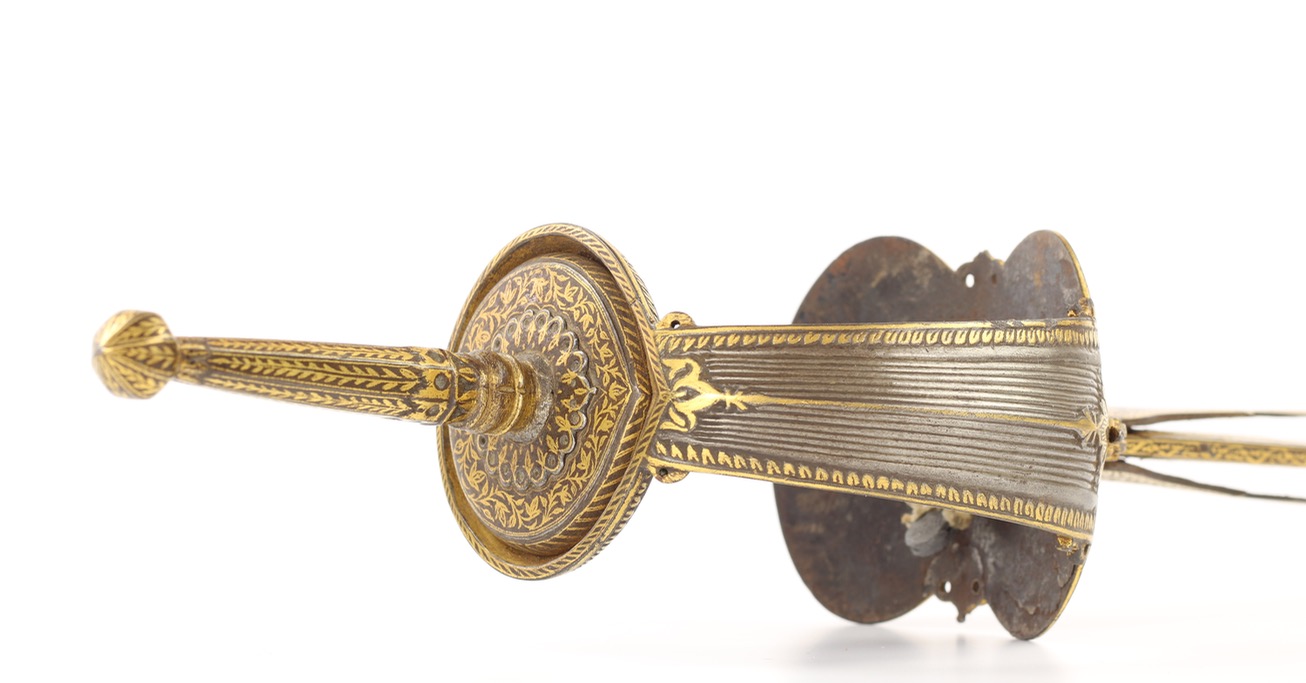
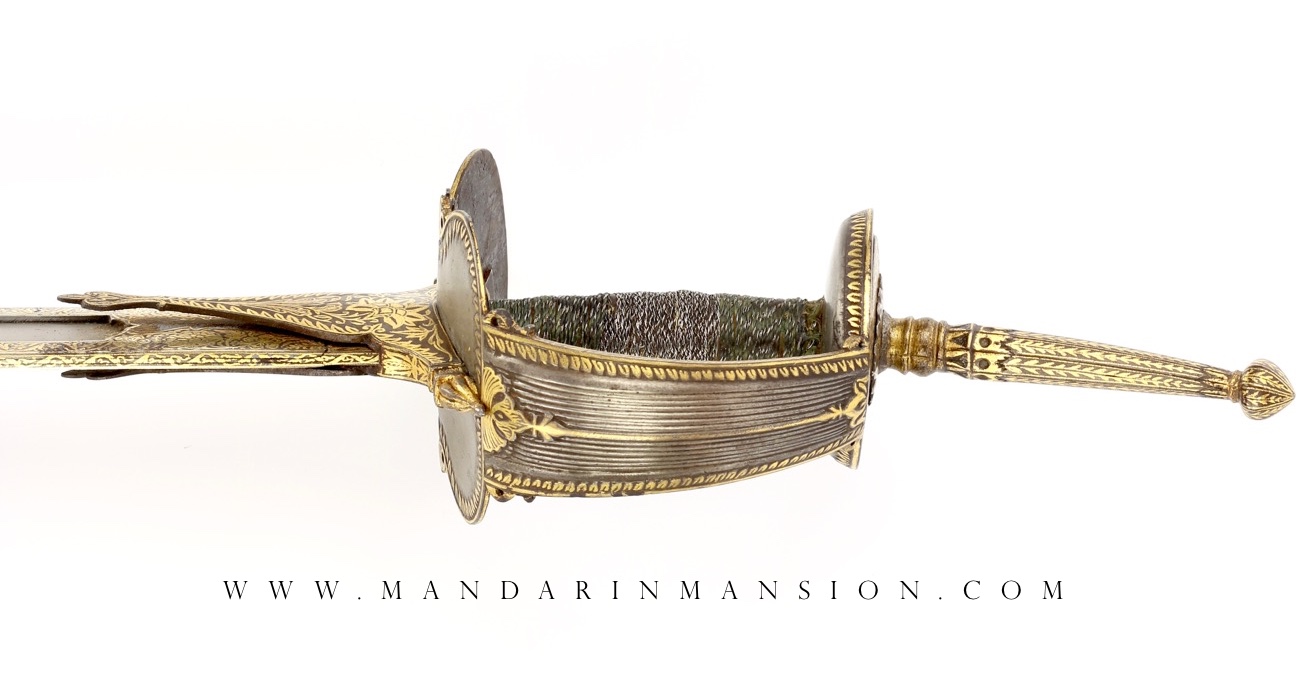
These mysterious weapons were already obsolete when the first ethnographers encountered them.
This peculiar sword was used by the Garo people of Assam for fighting, clearing the jungle, and animal…
A what? Yes exactly. An extremely rare piece, the only example I am aware of in published collections at…
With designs of animals, often attributed to Lucknow, north India.
